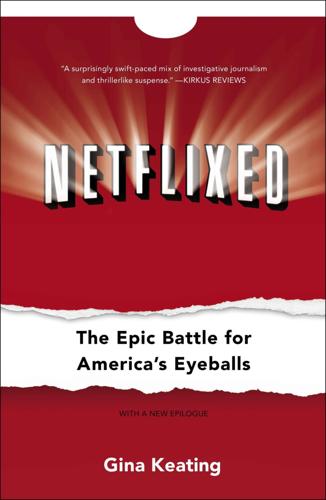
Netflixed: The Epic Battle for America's Eyeballs
by
Gina Keating
Published 10 Oct 2012
But in late 2004 he finally could turn to running his company without a corporate parent looking over his shoulder. Antioco had known for a couple of years that late fees were killing Blockbuster’s relationship with its customers. Late fees originally arose as a means to pressure customers to return rented movies quickly, so that stores could turn them around faster to make more money, and to avoid inventory shortages. Store operators were delighted when the fees unexpectedly became a strong and dependable revenue source. Franchisees were not about to give up late-fee revenue without a fight—even when Blockbuster’s market research showed that the fees turned off existing customers and strangled the company’s ability to attract new ones.
…
Still, he preferred losing store customers to Blockbuster Online than to Netflix or video on demand. Shepherd ordered market research on attitudes around late fees and discovered that, while only 20 percent of Blockbuster customers were paying late fees at any given time, more than 70 percent had paid them at one time or another, and most felt the stores were not consistent or fair about the way they were levied. Intellectually he knew the brand was damaged each time a customer got into an argument with a Blockbuster cashier over unexpected late fees, especially as it frequently happened in front of a long line of customers waiting to check out. But the idea of wiping out an important source of revenue when store sales were declining made his gut churn.
…
“Do you seriously think, if we change the pricing structure and get past this late fees thing, it will make a big difference?” Antioco asked. “I think it will fundamentally change the relationship with customers,” Shepherd said. Although Shepherd balked at killing late fees altogether, Antioco urged him to test such a program in a few U.S. markets. Shepherd chose to test in Chattanooga, Tennessee, a city where nearly every test initiative went wrong. He sent a second-string team of executives to launch the no-late-fees promotion—to increase its chances of failure. To his surprise, the Chattanooga test replicated Kerns’s results, so Shepherd ordered another city tested, and then another.
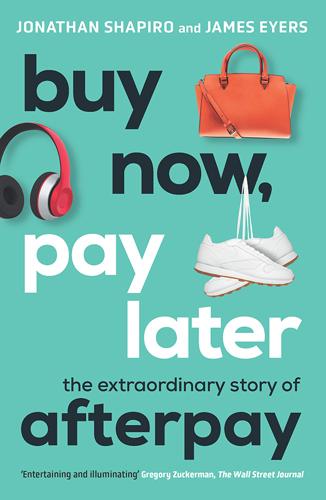
Buy Now, Pay Later: The Extraordinary Story of Afterpay
by
Jonathan Shapiro
and
James Eyers
Published 2 Aug 2021
‘That is where people who did start life doing credit checks, hitting people’s credit files—they just create a very different relationship with the customer and their existing business models [that] makes it difficult, in a pure way, to come into our market.’16 Afterpay was also facing mounting criticism about its late fees. On 27 August, the week before the PayPal bombshell, Afterpay released its full-year financial results for 2020, showing underlying sales more than doubling over the year to more than $11 billion, delivering total income of $503 million. Of this, just under $70 million, or 14 per cent of its income, came from customer late fees, which were up 49 per cent in dollar terms over the year. Afterpay had successfully shifted arguments away from late fees—which were falling as a proportion of overall revenue, to 14 per cent from almost 19 per cent a year earlier—but there was now no denying that it was a material source of revenue.
…
Those who trusted Afterpay formed the view that the 0.7 per cent of sales as losses was a sign that small, short-term loans were less risky than unsecured consumer finance, even though credit card losses, when calculated over total sales rather than loans made, were closer to 0.3 per cent—less than half the level of Afterpay. The doubters weren’t convinced. Their view was that the net transaction loss figure was made up by Afterpay to game the market and serve its own purposes, and that the company had the discretion to tweak some of the inputs. The measure netted off losses with late fees, and it wasn’t clear whether those late fees had actually been recovered or just been assumed to be recovered. And even if the credit risk was low, it had yet to be tested in a stressed environment. Find the Moat told readers Afterpay was in the ‘too hard basket’ but he kept an open mind. ‘Ultimately, investing in a start-up that is attempting to execute a brand-new business model necessitates that you are comfortable investing in uncertainty—and with this risk comes tremendous potential rewards (and our economy can only advance when there are people willing to make such a trade-off )
…
So far he’d been right, and Bell Potter’s clients were both richer and more loyal as a result. He took exception to Afterpay being compared to a payday lender, Dey’s focus on late fees and the prospect that ASIC might deem them a credit product. ‘Afterpay has been very clear that it has been open and been active with regulators regarding their product,’ Sotiriou wrote, ‘and at no stage has it been raised that they believe the product should fall under the credit code.’ It was a misconception that Afterpay’s technology accepted every customer transaction, he argued. And as for the late fees, a High Court ruling had demonstrated that institutions were entitled to levy a fee that is in line with the actual cost incurred.
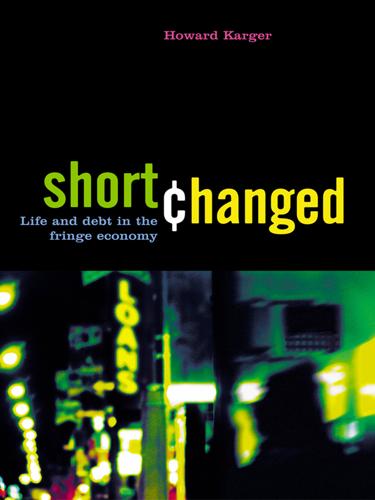
Shortchanged: Life and Debt in the Fringe Economy
by
Howard Karger
Published 9 Sep 2005
Sixty-two percent of banks said they charge cardholders a late fee if payments are not received on or before the due date. Twenty-nine percent of CCIs had tiered late fees based on a cardholder’s balance. For example, Wells Fargo charges a $20 late fee on balances up to $100; $29 for balances up to $1,000; and $35 for $1,000 or more.17 Consequently, cardholders with smaller balances pay proportionally higher fees. In 2003 the most common late fee among major CCIs was $35. Some CCIs, like Bank of America and MBNA, have upped their late fee to $39 or more on balances over $1,000. From 1999 to 2003 late-payment fees rose 23%.18 Combined credit card fees cost cardholders about $15 billion in 2004.
…
CCIs should be prohibited from raising the interest rates of cardholders who have credit problems with other lenders.42 At a minimum, they should be required to notify cardholders of an impending rate hike based on their credit records. They should also be required to provide cardholders with an opportunity to explain changes in their credit scores. Finally, CCIs should be required to provide a five-day grace period before charging late fees. Because CCIs are often located in remote parts of the country, slow mail plus delays in recording payments can result in expensive penalties and late fees. Despite aggressive credit card marketing, large numbers of people fall through the cracks. Lacking even minimal credit, they are forced to resort to the pawnshops and payday lenders of the storefront loan industry. It is to this group that we will now turn.
…
All told, in 2002 U.S. households owed an average of $8,940 on their credit cards compared with $7,842 in 2000. Credit card debt in 2002 was 173% higher than in 1992, and Americans paid $50 billion in finance charges, or about $1,100 per cardholder. Unpaid credit card debt, finance charges, and late fees are rising for those 35 years old and under. In 2003 the average balance-carrying consumer in that group owed $3,527, or almost 10% of his or her yearly income. Finance charges for the under-35 group were $456 in 2002, 18% higher than for older consumers.5 Although much of the chronic credit card debt is attributable to the 45-and-under age group, credit card debt among senior citizens increased by 89% from 1993 to 2003, to an average of more than $4,000.
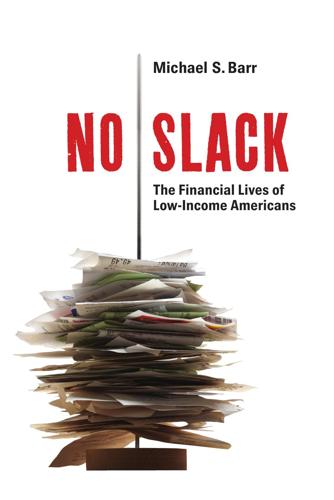
No Slack: The Financial Lives of Low-Income Americans
by
Michael S. Barr
Published 20 Mar 2012
Based on the understanding that consumers do not shop for penalty fees and that they often misforecast their own behavior, the act requires that late fees or other penalty fees must be “reasonable and proportionate,” as determined by implementing rules; that in any event the fees may not be larger than the amount charged that is over the limit or late; and that a late fee or other penalty fee cannot be assessed more than once for the same transaction or event. Furthermore, the act takes steps to make it easier for the market to develop mechanisms for consumer comparison 38. Some state rent-to-own laws also limit the amount and frequency of late fees on tardy payments and provide for an “early purchase option” whereby the consumer may purchase the item for the unpaid balance of the cash price as stated in the rental-purchase agreement, plus all past due payments and fees.
…
Given that consumers generally do not 12864-11_CH11_3rdPgs.indd 270 3/23/12 11:57 AM behaviorally informed regulation 271 understand how payments are allocated across different account balances even after improved disclosures (Federal Reserve Board 2007, 2008), the act requires a consumer’s payments above the minimum required to be applied first toward higher-cost balances. In addition, the act takes up our concern with late fees but goes beyond our proposals. Based on the same understanding that consumers do not shop for penalty fees and that they often misforecast their own behavior, it requires that late fees or other penalty fees must be “reasonable and proportionate,” as determined by implementing rules; that in any event the fees not be larger than the amount charged that is over the limit or late; and that a late fee or other penalty fee cannot be assessed more than once for the same transaction or event. Furthermore, the act takes steps to make it easier for the market to develop mechanisms for consumer comparison shopping by requiring the public posting to the Federal Reserve of credit-card contracts in machine-readable formats; private firms or nonprofits can develop tools for experts and consumers to use to evaluate these various contracts.
…
Moreover, payday usage in the AFS sector and bank overdrafts in the formal sector are often complementary: those who have Table 2-9. Use of Other Alternative Financial Services among Payday Loan Users Percent Other AFS use Other AFS a Pawnshop Cash advance RAL Rent-to-own Pension cash-out Secured card Credit-card late fee Overdraft By users of payday loans By nonusers of payday loans 40 24 45 20 19 37 43 57 10 7 21 5 6 9 21 19 Source: Detroit Area Household Financial Services study. a. For all but credit-card late fee, difference is significant at the 10 percent level after controlling for age, race, gender, and income. 12864-02_CH02_3rdPgs.indd 45 3/23/12 11:55 AM 46 michael s. barr used an overdraft from their bank account are more than five times more likely to use a payday lender than those who overdrew their accounts.
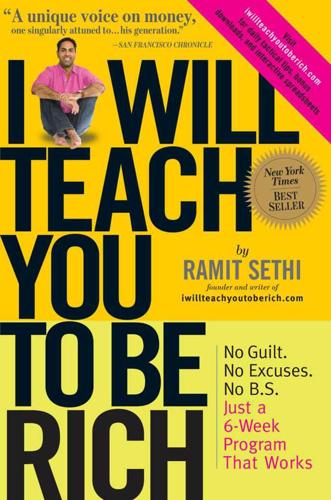
I Will Teach You To Be Rich
by
Sethi, Ramit
Published 22 Mar 2009
You’ll get an e-mail from your card company each month before the payment goes through so that you can adjust your payment as needed. * * * I just totally forgot the due date for my credit card. So not only did they charge me a late fee, but they charged me interest on that month’s and the previous months’ purchases. I called up the customer service line of my credit card and told them that I had been a good customer in the past, and asked if they could do anything for me with the fees. The representative removed the late fee and refunded $20 of the interest charge back to my account. They returned a total of $59 to me with one phone call. —ERIC HENRY, 25 * * * 2.
…
They help you keep track of your spending much more easily than cash, and they let you download your transaction history for free. Most offer free warranty extensions on your purchases and free rental car insurance. But unfortunately, there’s more to them than that. Credit cards are also convenient enemies. Almost everyone has a bad story about late fees, unauthorized charges, or overspending. Not surprisingly, many pundits (and parents) have a knee-jerk reaction to credit cards: “Using credit cards is the worst financial decision you can make,” they shout. “Cut them all up!” What an easy battle cry for people who want simple solutions and don’t realize the benefits of multiple sources of credit.
…
Awful Consequences * * * If you miss even one payment on your credit card, here are four terrible, horrible, no good, very bad results you may face: 1. Your credit score can drop more than 100 points, which would add $240/month to an average thirty-year fixed-mortgage loan. 2. Your APR can go up to 30 percent. 3. You’ll be charged a late fee, usually around $35. 4. Your late payment can trigger rate increases on your other credit cards as well, even if you’ve never been late on them. (I find this fact amazing.) Don’t get too freaked out: You can recover from the hit to your credit score, usually within a few months. In fact, if you’re just a few days late with your payment, you may incur a fee, but it generally won’t be reported to the credit bureaus.
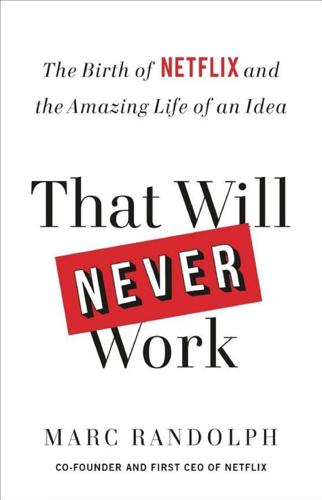
That Will Never Work: The Birth of Netflix and the Amazing Life of an Idea
by
Marc Randolph
Published 16 Sep 2019
Travis Kalanick spends $800 on a private driver on New Year’s Eve and thinks there has to be a cheaper way—that’s Uber. There’s a popular story about Netflix that says the idea came to Reed after he’d rung up a $40 late fee on Apollo 13 at Blockbuster. He thought, What if there were no late fees? And BOOM! The idea for Netflix was born. That story is beautiful. It’s useful. It is, as we say in marketing, emotionally true. But as you’ll see in this book, it’s not the whole story. Yes, there was an overdue copy of Apollo 13 involved, but the idea for Netflix had nothing to do with late fees—in fact, at the beginning, we even charged them. More importantly, the idea for Netflix didn’t appear in a moment of divine inspiration—it didn’t come to us in a flash, perfect and useful and obviously right.
…
But I suspect I learned about them from Reed. He actually read all the free tech journals that got mailed to Pure Atria—journals that, in my case, only accumulated in a dusty pile in the corner of my office. And sometime after the online video rental idea crashed and burned, he’d complained to me about another exorbitant late fee he’d incurred at a video store. Movies were on his mind—and movies by mail had been one of the few ideas I’d had that had caught his eye. One thing’s for certain: I didn’t see a DVD on a shelf. Prior to 1997, DVDs were only available in Japan. And even if you found one, there was no way to play it—no DVD players were for sale in the States.
…
When I came back to the office and shared my observation with Reed, it sparked another interesting Reed and Marc conversation: Why were we storing all those DVDs in a warehouse? Maybe we could figure out a way to let our customers store the discs. At their houses. On their shelves. Just keep the DVDs as long as they wanted. What if we did away with late fees? The more we thought about this idea, the more we liked it. We knew that one of the biggest problems with our current rental program was that it relied on a somewhat organized, prepared renter. Someone who thought several days in advance about what they might want to watch. In other words, pretty much nobody that any of us knew.
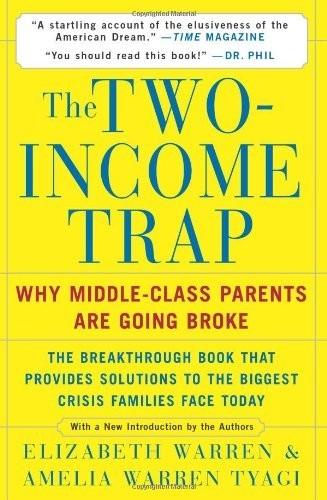
The Two-Income Trap: Why Middle-Class Parents Are Going Broke
by
Elizabeth Warren
and
Amelia Warren Tyagi
Published 17 Aug 2004
They prospered not by lending to the unemployed and destitute, but by expanding services to people who were fortunate enough to hold on to their jobs” (p. 292). 59 Between 1996 and 2001, total late fee revenues generated to bank credit card issuers increased from $1.7 billion to $7.3 billion. “Late Fee Bug,” in Cardweb.com, May 17, 2002. Available at http://www.cardweb.com/cardtrak/news/2002/may/17a.html [1/28/2003]. The average credit card late fee increased from $11.60 in February 1994 to $30.04 in November 2002. “Late Fees Slow,” in Cardweb.com, December 11, 2002. Available at http://www.cardweb.com/cardtrak/news/2002/december/11a.html [1/28/2003]. 60 Revenues of the top 100 contingent collections agencies grew from $1.7 billion in 1995 to $4.2 billion in 2000.
…
Soon the charges start mounting up for the basics of life—food, gasoline, and whatever else can go on “the card.” When there still isn’t enough to go around, the game of impossible choices begins. Pay the mortgage or keep the heat on? Cancel the car insurance or the health insurance? Meanwhile, interest and late fees have piled on, making everything more expensive. Ruth Ann and James got a small reprieve from family. James’s parents kicked in $4,000 and Ruth Ann’s brother lent them $1,500. But these temporary infusions of money were just that—they covered the minimum payments for a few months, but they didn’t begin to provide a way out of the hole.
…
I went ahead and filed but it was done very, very reluctantly. I mean, I couldn’t keep asking people like my mom to bail me out again.” The relief provided by the bankruptcy courts was only partial. The monthly payments for her home actually increased when she filed. Gayle now had to pay off an additional $10,750 in late fees and past-due interest that her lender had tacked on—and that extra money had to be paid within three years, not over the thirty-year life of her mortgage. At the time we spoke with her, Gayle’s expenditures on property taxes, mortgage payments, and utilities claimed nearly three-quarters of her take-home pay.25 She couldn’t expect much help from child support, either.
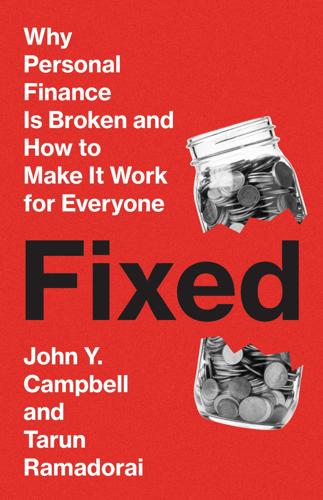
Fixed: Why Personal Finance is Broken and How to Make it Work for Everyone
by
John Y. Campbell
and
Tarun Ramadorai
Published 25 Jul 2025
Some people make equal dollar payments to all debts or dollar payments that are proportional to the size of each debt (“balance matching”).42 Some people pay off small debts first, to have the satisfaction of reducing the number of creditors. Some people even incur late fees on a credit card by failing to make the minimum payment, while making payments on another card that would be sufficient to avoid the late fee on the first card. All these payment strategies are costly mistakes—particularly the last one, given the very high interest rate that credit card companies are effectively charging when they impose a late fee for a modest missed payment. It is also worth exploring ways to reduce the APR on existing debt. One way to do this is to transfer credit card balances to new cards that offer low rates on transferred balances.
…
See Consumer Financial Protection Bureau, “CFPB bans excessive credit card late fees, lowers typical fee from $32 to $8,” March 5, 2024, https://www.consumerfinance.gov/about-us/newsroom/cfpb-bans-excessive-credit-card-late-fees-lowers-typical-fee-from-32-to-8/; and “CFPB proposes rule to close bank overdraft loophole that costs Americans billions each year in junk fees,” January 17, 2024, https://www.consumerfinance.gov/about-us/newsroom/cfpb-proposes-rule-to-close-bank-overdraft-loophole-that-costs-americans-billions-each-year-in-junk-fees/. The reduction in credit card late fees was blocked in court in 2024, and these and other CFPB policies are likely to be reversed in the second Trump administration.
…
I wouldn’t have accepted this if I knew the interest was that high.”33 Although the APR is a good starting point for a credit cost calculation, it is not a complete measure of credit cost. The providers of short-term credit often charge additional fees that drive the cost of credit significantly above the APR for many borrowers. Credit cards, for example, charge late fees if minimum payments are not made. The US Consumer Financial Protection Bureau estimates that in 2020 credit card fees added about 1% to the credit cost of prime borrowers, but over 5% to the credit cost of subprime borrowers.34 This is yet another example of the tilted playing field in our current personal finance system.
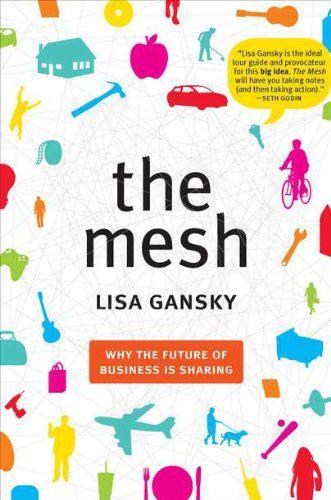
The Mesh: Why the Future of Business Is Sharing
by
Lisa Gansky
Published 14 Oct 2010
First, Netflix paid close attention to Blockbuster’s vulnerabilities with its best customers. Netfix knew that Blockbuster’s Achilles’ heel was late fees. Blockbuster’s revenue model depended on the fees, but customers hated them. Late fees were irritating to pay, like parking tickets, and created anxiety around running the videos back before the noon deadline. Worse, its best customers were the most likely to be punished by the fees. Netflix realized that if it could create a profitable business model that didn’t require late fees, it’d win. The then-in-progress shift to the DVD format presented an opportunity. Netflix realized DVDs could be safely and inexpensively delivered by the post office.
…
Its customers wouldn’t have to rush down to the rental store, hoping that a new release would still be available. They wouldn’t have to wait in line behind a guy arguing with his girlfriend, only to reach an underpaid clerk who’d clearly rather be somewhere else. And they wouldn’t have to pay a late fee, because there weren’t any late fees. Instead, Netflix introduced a subscription model that allowed customers to watch and return movies at their own pace. What clinched Netflix’s advantage, though, was that it functioned as an information business. By creating a Web-based share platform where people could buy a subscription and queue up their movie choices, Netflix executives knew they could really get to know the customers.
…
The Web site encouraged customer feedback on improving the service, and continually introduced new tools to make it easier to find, rate, and order movies and TV shows. Rather than conducting expensive national advertising campaigns, Netflix created partnerships with nearly every brand of DVD player. Each new player included a card offering three free DVD rentals from Netflix. The card also made a promise: “No Late Fees.” Instead, Blockbuster paid a late fee. They were late in acknowledging customer resentments, and late in understanding the spreading power of social networks to shape brand perception. They created a share platform, but neglected other elements that make Mesh businesses so competitive. Netflix’s more robust and networked share platform gave it the power to collect and crunch consumer, usage, and product data to shape customized offers.
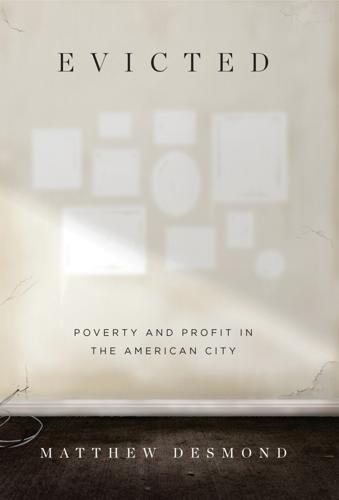
Evicted: Poverty and Profit in the American City
by
Matthew Desmond
Published 1 Mar 2016
One Milwaukee landlord who owned roughly 100 units in low-income neighborhoods told me he gave approximately 30 percent of his tenants five-day eviction notices each month. A $50 late fee accompanied each notice. He estimated that 90 percent of those cases were settled via stipulation; the remaining 10 percent were evicted. This meant that he collected roughly $1,350 in late fees each month from tenants he did not evict. That amounted to over $16,000 a year in late fees alone. 4. Milwaukee Eviction Court Study, 2011. In addition to surveying tenants, interviewers took eviction court attendance every weekday (save one) between January 17 and February 26, 2011.
…
Between sixty and seventy percent of rental agreements in this state are verbal.” A man in a camouflage hat raised his hand with a question about evictions: “Do you have to leave them there for three months or some foolish thing?” “No. Nothing protects you from not paying the rent.” “Is there a maximum charge for a late fee?” The room laughed nervously, and Karen frowned at the question. “Can you go in any of the common areas, the hallways, the open basement, without any notice?” Karen paused for effect. She smiled at the woman who had asked the question. She was a black woman, probably in her fifties, who had sat in the front row and taken notes throughout the day.
…
Her shoulders were uplifted under her worn overcoat. She reached into her purse and handed the landlord $700 in cash. “I’m hoping—” she began. The landlord cut her off. “Don’t hope. Write the check.” “I can get you another six hundred in two weeks.” The landlord asked her to sign a stipulation, which included a $55 late fee. She reached for his pen.3 Toward the front of the room, in a reserved space with tables and plenty of empty chairs, sat lawyers in pinstripe suits and power ties. They had been hired by landlords. Some sat with manila folders stacked in front of them, reading the paper or filling in the crossword.
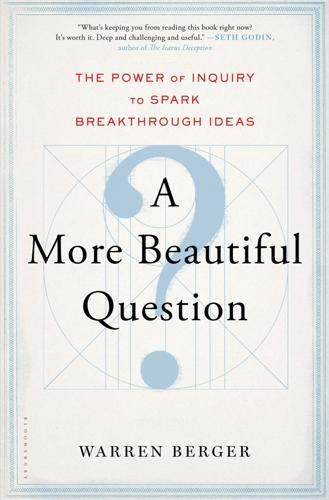
A More Beautiful Question: The Power of Inquiry to Spark Breakthrough Ideas
by
Warren Berger
Published 4 Mar 2014
(He has admitted that another question on his mind at the time was How am I going explain this charge to my wife?) Surely, others have been similarly outraged by late fees. But Hastings decided to do something about it, which led to a subsequent question: What if a video-rental business were run like a health club? He then set about figuring out how to design a video-rental model that had a monthly membership, like a health club, with no late fees. (Years later, Hastings would question whether Netflix could and should expand its model: Why are we only renting the films and shows? What if we made them, too?)
…
What if this change represents an opportunity for us? How might we make the most of the situation? Why are we falling behind competitors? Who is to blame? What business are we in now—and is there still a job for me? Now that we know what we now know, what’s possible now? Why should I have to pay these late fees?, (the question behind Netflix) How am I going to explain these late fees to my spouse? What if a video rental business were run like a health club? Why do we have to wait for the picture? (the question that led to Polaroid) Can animation be cuddly? With all that’s changing in the world and in our customers’ lives, what business are we really in?
…
Then he kept asking more Why questions as he explored the nature and the dimensions of the problem. Innovative questioners, when faced with situations that are less than ideal, inquire as to why, trying to figure out what’s lacking. Oftentimes, these questions arise out of mundane, everyday situations, such as that “late fees” problem encountered by Reed Hastings before he founded Netflix. Similarly, Pandora Internet Radio founder Tim Westergren, a former band musician, observing all the talented-yet-struggling musicians he knew, wondered why it was so difficult for them to connect with the audience they deserved. Airbnb cofounder Joe Gebbia, along with roommate Brian Chesky, wanted to know why people coming to his town at certain times of the year had so much trouble getting hotel accommodations.
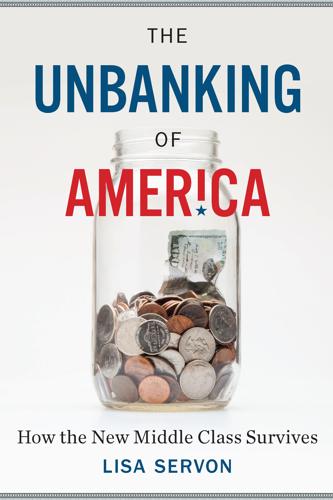
The Unbanking of America: How the New Middle Class Survives
by
Lisa Servon
Published 10 Jan 2017
Many independent contractors are willing to pay the fees charged by alternative financial-services providers to “stay afloat,” as my contractor Tom puts it. But others simply need their money as soon as they can get it. Customer after customer told me that they couldn’t afford to have the bank hold their check, waiting for it to clear. They needed that money right away to put food in the cupboard, avoid late fees on bills, or keep the electricity from being cut off. Customers like Michelle come to RiteCheck to withdraw money from Electronic Benefits Transfer (EBT) cards, the vehicle by which the New York State Office of Temporary and Disability Assistance delivers cash and Supplemental Nutrition Assistance Program (SNAP) benefits to those who are eligible.
…
She pulled up a file of clients that the computer system had generated—people whose checking accounts had been tapped the day before, when their loan payment was due, and whose accounts had insufficient funds. We called these customers first; if they paid back their loans on the first day after the bounce, Check Center waived the fifteen-dollar late fee. Delia teaches me the protocol for which people we call, when we call them, and what the law allows us to say. We make calls only between 8 a.m. and 6:30 p.m. If we don’t reach the person and have to leave a message, we are not allowed to say we’re calling about a late loan. We say, “I am calling about an urgent business matter.”
…
virtually eliminated caps: Jose Garcia, “Borrowing to Make Ends Meet: The Rapid Growth of Credit Card Debt in America” (Washington, DC: Demos, November 7, 2007). http://www.demos.org/publication/borrowing-make-ends-meet-rapid-growth-credit-card-debt-america allowing them to be determined: Ibid. average late-payment fee: Ibid. By 2009, it had climbed: Index Credit Cards, “Credit Card Late Fees Average $34.09, Over-the-Limit Fees Average $36.53,” indexcreditcards.com, October 6, 2009. http://www.indexcreditcards.com/creditcardlatefees/ 69 “bring money out of the shadows”: Bari Tessler Linden, “The Antidote to Money Shame,” Bari Tessler Linden blog, November 7, 2013. http://baritessler.com/2013/11/money-shame/ “flip your rich switch”: Nan Akasha, “Money Archetypes and Guilt and Shame,” Nan Akasha blog, May 29, 2012. http://www.nanakasha.com/money-archetypes-guilt-shame rise in bankruptcy filings: Jill Lepore, “The Warren Brief,” The New Yorker, April 21, 2014. http://www.newyorker.com/magazine/2014/04/21/the-warren-brief left one partner economically: David Himmelstein et al., “Medical Bankruptcy in the United States, 2007: Results of a National Study,” American Journal of Medicine, vol. 22, no. 9 (August 2009). http://www.amjmed.com/article/S0002-9343(09)00404-5/pdf cut down on abusive: Kathleen Day, “Bankruptcy Bill Passes; Bush Expected to Sign,” Washington Post, April 15, 2005. http://www.washingtonpost.com/wp-dyn/articles/A53688-2005Apr14.html 70 claims about bankruptcy fraud: Ibid.; Lepore, “The Warren Brief.”
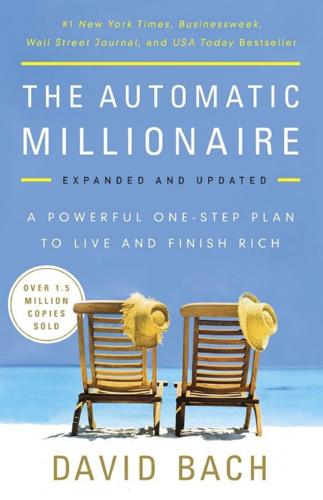
The Automatic Millionaire, Expanded and Updated: A Powerful One-Step Plan to Live and Finish Rich
by
David Bach
Published 27 Dec 2016
As long as you keep your checking account adequately funded and you have sufficient credit available on your card accounts, this will protect you from ever missing a payment due date. My entire financial life is automated this way. As a result, all my bills are always paid on time, whether I am in town or not, and I never get hit with late fees or penalties. Just this single tip can save you hundreds of dollars a year in late fees the banks and credit card companies hope to make off of you. ❑ 7. Give to charity automatically. As I shared in Chapter Eight, Make a Difference with Automatic Tithing, giving back is an integral part of being an Automatic Millionaire and living rich.
…
AT THIS RATE, YOU’LL BE PAYING OFF YOUR BALANCE FOR THIRTY YEARS! If you pay just the minimum due each month on an $8,400 credit balance, you will wind up having to make 365 monthly payments before it goes to zero. That’s thirty years and five months’ worth of payments. And that’s assuming you never charge another dime on the card, never get hit with a late fee, and are never billed for an annual service fee. Can you imagine it? Thirty years and five months’ worth of payments—and that’s for a card that charges 18 percent annual interest. Many cards charge much higher rates—some as high as 29 percent. Here’s the bottom line: You cannot become an Automatic Millionaire if you run up credit card balances and pay only the minimum due.
…
If you want to pay more than the minimum on any of your cards—and if you follow the plan I lay out in Chapter Seven, The Automatic Debt Free Lifestyle, you will—you can write a check for the extra amount. Making your minimum payments automatic ensures that you will never miss a payment deadline and get hit with late fees or penalty interest rates. ❑ 6. Pay all your monthly bills automatically. There are two kinds of monthly bills: regular ones that are always the same amount (like mortgage, rent, or car payments) and those where the balance due sometimes varies (like phone bills or cable and Internet charges).
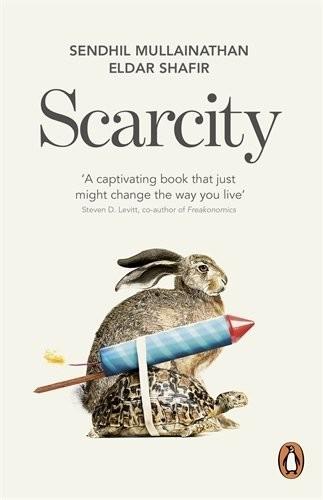
Scarcity: The True Cost of Not Having Enough
by
Sendhil Mullainathan
Published 3 Sep 2014
Savings, on the other hand, has no dedicated assistants to care for it, and—absent a behaviorally informed intervention like ours—will end up outside the tunnel most of the time. Of course, insights about tunneling can also be used to exploit. You might set high late fees and then not remind people of the impending charges. Many of these effects, from reminders to the impact of late fees, will disproportionately affect the poor, since they are the ones who are tunneling—and suffering the consequences—the most. Reminders, of course, are not limited to money. A busy person will too readily neglect the gym, which is important but never urgent.
…
And there was no end in sight. He had bought a Blu-ray player on credit, with no payments for the first six months. That was five months ago. How would he pay this extra bill next month? Already, more and more money went to paying off old debts. The bounced check had a hefty overdraft charge. The late bills meant late fees. His finances were a mess. He was in the deep end of the debt pool and barely staying afloat. Shawn, like many people in his situation, got financial advice from many sources, all of it pretty similar: Don’t sink any deeper. Stop borrowing. Cut your spending to the minimum. Some expenses may be tough to cut, but you’ll have to learn how.
…
The busy person is likely to commit an even bigger planning error; after all, he is likely still needing to attend to his last project and is more distracted and overwhelmed—a surefire way to misplan. With compromised bandwidth, we are more likely to give in to our impulses, more likely to cave in to temptations. With little slack, we have less room to fail. With compromised bandwidth, we are more likely to fail. This allows a look at the conditions of scarcity through a new lens. Late fees are a penalty for misplanning or forgetting, yet they create an even more hostile environment for those living with scarcity. Readily available junk food may cause obesity in the poor and the busy, who are, in turn, more exposed and less attentive; it is less of a threat for the rich and the relaxed.
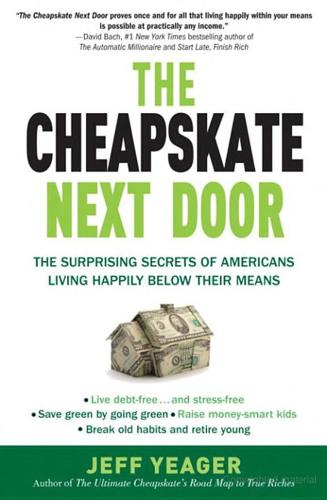
The Cheapskate Next Door: The Surprising Secrets of Americans Living Happily Below Their Means
by
Jeff Yeager
Published 8 Jun 2010
Most employers offer direct deposit of paychecks, and automatic bill pay can be arranged with most vendors and banks. Not only is it a free service and saves time (not to mention postage stamps and gas), but it guarantees that you’ll always pay your bills on time and avoid late fees and penalties. Savings: Variable, but with late fees on credit cards and other consumer loans averaging about $30, avoid four of those bad boys a year and you’ll save $120. Poor People (Often) Have Poor Habits Okay, before you get your knickers in a twist about the insensitivity of the above statement, let me say that of course I recognize that many poor people in the United States and around the world are truly victims of circumstances beyond their control.
…
The DVDs you request are mailed to you and usually arrive in a single day—amazing service. You can keep them as long as you like (no late fees), and rent as many as you want in a month, just so long as you don’t have more than three checked out at any one time. To return them, they give you a nifty, postage-paid return envelope that you just drop in the mail. Savings: Compared with conventional DVD rental stores, if you rent three movies a week you’ll probably save more than $500 a year by joining Netflix—and that doesn’t include the cost of late fees, membership fees, and the gas you’ll burn up with most rental stores. On the Road with the Cheapskate Next Door It would be a mistake to assume that all cheapskates are homebodies, cloistered in their humble abodes for fear that if they venture out into the world it would cause their Spending Anxiety Disorder to flare up.
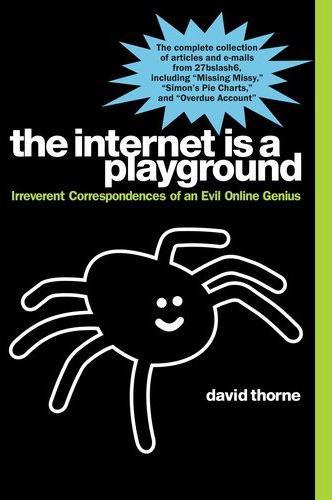
The Internet Is a Playground
by
David Thorne
Published 24 Mar 2010
picturesofpegs.com This website would contain pictures of pegs, allowing the users to have access to pictures of pegs whenever they need them. amihavingaheartattack.com A website for people having a heart attack. Dear Blockbuster member, we want our DVDs back I find it annoying to pay late fees on movies, and I am too lazy to return them on time, which leaves me simply complaining about it. I used to know a guy named Matthew who would sell me copies of the latest movies for five dollars each, but they were all recorded by someone in a cinema with what appeared to be a low-resolution webcam, and epilepsy.
…
It also had something to do with an old lady who conveniently lost her memory, so she could not remember being a whore throughout the entire film. I don’t recall a lot of it, because I was too busy being cross about watching it. In a utopian future society she would have been hunted down and killed at thirty. In regard to the late fees, I understand the amount is based on what you lose by not being able to rent the movies out. You probably had people lined up around the block waiting to rent Logan’s Run. For eighty-two dollars, though, I could have purchased six copies of it from DVD Warehouse or, as I have heard he is a bit strapped for cash, had Kevin Costner visit my house in person and re-enact key scenes from Waterworld in the bathroom.
…
To: David Thorne Subject: Re: Re: Re: Re: Re: Re: Re: Re: Re: DVDs Hi David. Restocking fees are: 002190382 Journey to the Center of the Earth $9.30 003103119 Logans Run $7.90 008629103 Harold and Kumar Escape from Guantanamo Bay $6.30 000721082 Waterworld $5.70 Total: $29.20—I have deleted your late fees and noted on the computer that the amount owed is for the replacement movies not fees. Kind regards, Megan From: David Thorne Date: Thursday 12 November 2009 7:42 p.m. To: Megan Roberts Subject: Re: Re: Re: Re: Re: Re: Re: Re: Re: Re: DVDs Dear Megan, Those prices seem reasonable.
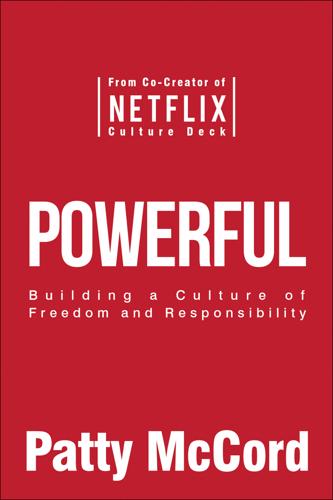
Powerful: Teams, Leaders and the Culture of Freedom and Responsibility
by
Patty McCord
Published 9 Jan 2018
At this stage in our growth, that considerable up-front expense meant that we didn’t have much time to make the model work. Second, the urgency of getting it right meant that I had to help everyone else in the company understand the new business model too. At the time, the only model any of us knew included due dates and late fees. When Reed proposed a subscription without due dates and late fees, it was truly scary. After all, late fees were the gas in Blockbuster’s engine. When we said weren’t going to charge them, everybody in the company was asking, “How’s that going to work?” I fell in love with being a businessperson, and I didn’t want to be happy-face HR den mother anymore.
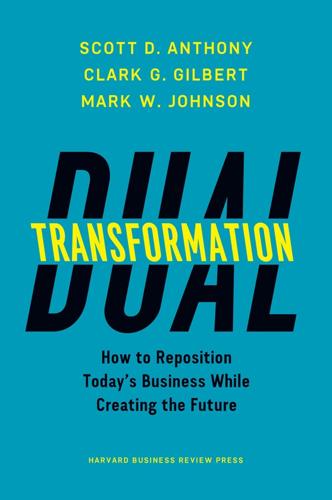
Dual Transformation: How to Reposition Today's Business While Creating the Future
by
Scott D. Anthony
and
Mark W. Johnson
Published 27 Mar 2017
When Netflix started, the dominant competitor was Blockbuster Video, which owned thousands of stores across the United States where people rented movies. Blockbuster promised customers it would always have the latest movies (blockbusters, of course) in stock. To live up to that promise, Blockbuster limited the amount of time people could keep the rented movies, charging substantial late fees if they missed the deadline. That allowed Blockbuster to manage its inventory shrewdly, live up to its promise, and deliver attractive returns to shareholders. TABLE 2-2 Transformation A at Adobe Revenue source Revenues (US$B) 2011 2012 2013 2014 2015 Software 3.3 3.2 2.4 1.6 1.1 Subscriptions 0 0 0.5 1.3 2.3 Digital marketing 0.9 1.1 1.2 1.4 1.5 Note: Figures are fiscal year (December–November); subscriptions includes only core digital media products.
…
TABLE 2-2 Transformation A at Adobe Revenue source Revenues (US$B) 2011 2012 2013 2014 2015 Software 3.3 3.2 2.4 1.6 1.1 Subscriptions 0 0 0.5 1.3 2.3 Digital marketing 0.9 1.1 1.2 1.4 1.5 Note: Figures are fiscal year (December–November); subscriptions includes only core digital media products. At first, Netflix looked similar to the traditional video rental store. Users would rent a single movie and would pay late fees if they kept it too long. Consumers got the convenience of home delivery and the potential to access so-called long tail content—videos that were too niche to appear in a retail chain—while giving up the ability to get exactly what they wanted right away. Then in 1999 Netflix executed its first transformation A, one that ultimately led to the demise of Blockbuster and other video rental stores.
…
The following three case studies show organizations that demonstrated the courage to choose before convincing data had arrived. Then we describe the seven specific early warning signs of disruptive change. Netflix Legend has it that Netflix’s founding traces to Reed Hastings’s frustration borne of incurring ridiculous late fees for forgetting to return his Apollo 13 DVD. Recall that the original idea was to allow people to rent and return videocassettes through the mail. The rise of the DVD format, which could be easily mailed in slim envelopes and delivered by the US Postal Service, along with the adoption of monthly subscription fees (described in more detail in chapter 2), gave the idea additional juice.

Competition Overdose: How Free Market Mythology Transformed Us From Citizen Kings to Market Servants
by
Maurice E. Stucke
and
Ariel Ezrachi
Published 14 May 2020
That $100-a-night room has ended up costing double what he’d expected. But there’s no time to argue. His plane is leaving soon, and the rescheduling fee is more than the airfare. Later that month, another surprise awaits him. His new credit card apparently has a higher interest rate than he expected and sky-high late fees, too, which he discovered after he overlooked his bill because so much work had piled up on his desk while he was on vacation. His assumption that he would always pay on time has already been proved wrong. Astonishingly, all of this takes place in two intensely competitive markets—hotels and credit cards—where, in theory, the power of competition will mean that we consumers can expect to get great deals, where our interests will reign supreme as the merchants fight tooth and nail for our business.
…
But this is not a competition that operates by finding more and more ways to please its customers, as we might expect; instead it funnels the companies’ ingenuity into finding ways to drag us ever farther out to sea. The rivals offer promotions that drain our wealth. They outmaneuver each other to find our weaknesses, and they draw us unsuspectingly into debt. We swim against a rip current of late fees, of automatic enrollment in programs we don’t want that charge us even more fees, of misleading and deceptive information about terms, prices, or payments. If we slacken even briefly, we are carried deeper into debt. Some of us make it to shore. Yet, embarrassed by our failure to do due diligence, by our gullibility, we don’t speak up.
…
It just ended up costing about double what we expected because we didn’t know about all the fees that were going to be added to the base price—and didn’t protest them once we became aware of them. And our credit card works perfectly well—that is, it allows us to buy what we want when we want it without much concern about how we’re going to pay for it, which we enjoy a lot—until we come face-to-face with the high interest rate and late fees that were hidden in the fine print. But since we can keep making just minimum payments, we can keep closing our eyes to the real cost. As a measure of how topsy-turvy these competitive markets are, the credit card industry has turned the definition of deadbeat upside down. Credit card deadbeats are customers who successfully avoid the hidden fees because they pay in full and on time, and live within their means.
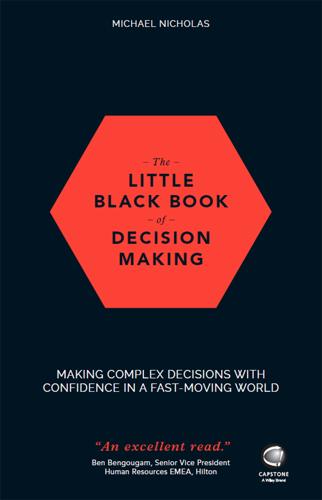
The Little Black Book of Decision Making
by
Michael Nicholas
Published 21 Jun 2017
New companies would be created, there would be a period where basic principles for value creation were worked out, then the model would be set into the corporate culture and delivered via systems and processes designed to ensure prolonged success. Legend has it that in 1997, an unremarkable event occurred: a Blockbuster customer named Reed Hastings was charged $40 for the late return of “Apollo 13”.3 Blockbuster's late fees were highly profitable for the company, but much disliked by customers. But, unlike other customers, Reed Hastings didn't simply walk away dissatisfied – he created Netflix. From the start, he was was highly innovative: He wanted to get away from having employees and running shops, and so set up a model that used the post to distribute DVDs.
…
A side-benefit was that it also removed the need for customers to drive to a store to rent or return videos, as they were forced to do with Blockbuster. Just a couple of years after launching the business, he overhauled the revenue model. He ditched payments each time a movie was hired and adopted instead a subscription-based model that allowed his customers to watch unlimited numbers of movies whenever they wanted, with no return dates or late fees. He was quick to realise that the future would be in online delivery, not physical discs sent through the post, and moved to video streaming at the earliest opportunity, redefining the industry for the second time in quick succession. Where was Blockbuster's innovation during this period? Superficially, it certainly seems that Blockbuster, with its thousands of stores, might have become a bit of a dinosaur, unable to adapt to changing market dynamics and the rapid advance of new technologies, and that this created the opportunity for Netflix.
…
Everything New Becomes Old Blockbuster's legacy is not unusual: that of identifying a revolutionary approach to its market and implementing it successfully, but then failing to adapt sufficiently well to competitor activities and the next disruptive technology. Today – with the benefit of hindsight – it seems inevitable that a business model that required customers to drive to a store to rent a movie so they could watch it at home, only to have to repeat the process in reverse a day or two later (or suffer huge, profit-driving late fees) would become outmoded at some point. It looks equally obvious that a retail strategy would not work, and that more and more people would want flexible delivery of content to devices that may well be mobile, rather than have their viewing tethered to a single screen in a fixed location. But to suggest that these factors should have been equally obvious while they were happening ignores what we now know about hindsight, and is a huge over-simplification.

The Latte Factor: Why You Don't Have to Be Rich to Live Rich
by
David Bach
and
John David Mann
Published 6 May 2019
How much did she and her roommate actually spend on those cable channels they hardly ever watched? What was hanging in her closet that she rarely wore? What other junk was piled in there? How much of it had she put on credit cards? How much interest had stacked up on those cards? And if she didn’t make every single payment on time (which she did not), then just what were the late fees? Zoey groaned. She didn’t want to think about how much everything actually cost. She tilted her head back and spoke out loud to the ceiling. “Could someone else figure this all out for me, please?” Ha-ha again. Myth #3 in action. She pulled out the Starbucks napkin she had stuffed in her pocket, smoothed it out on the little counter, and looked at the total at the bottom of the column of numbers
…
Once she’d learned how to set up her essential bill payments to go out of her checking account automatically on whatever day of the month she set, she put those credit card minimums on automatic. Not only did that lift another burden of worry off her shoulders, but she was also surprised (and thrilled) to see just how much she saved by not paying any more late fees. Quite a decent latte factor itself. Following a suggestion from Henry, she’d soon added a second automatic monthly payment on each card, timed two weeks after its corresponding minimum payment, and the two together were like a pair of sharp axes to a tree: in twenty-two months the tree fell, and her card balances hit zero.
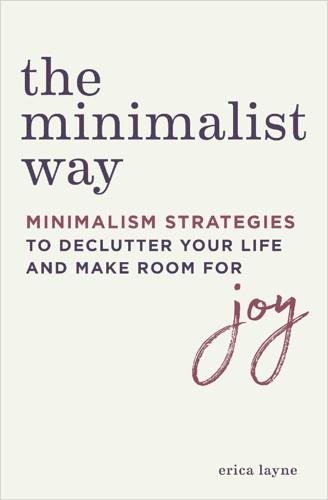
The Minimalist Way
by
Erica Layne
Published 25 Feb 2019
I hope the following ideas inspire you to see areas in your own life where you can save your money in order to put it toward the things and experiences that mean the most to you. •Plan your meals (see chapter 5) to take advantage of grocery sales, minimize trips to the store, and prevent food waste at home. •Experiment with couponing. •Schedule online autopay for your bills to avoid late fees (and as a bonus, free up some space in your brain!). •Use a subscription-based TV service (like Netflix or Hulu) instead of paying for cable. Or try living without TV altogether. •Attend free events put on by your church or community. •Spend more time in nature. •Avoid buying fast food by taking snacks with you when you travel or go on outings.
…
We use a card that gives us points toward travel, which we love, but knowing that we’ll be paying off the balance every month forces us—in a good way—to watch what we spend, because if we don’t have the money, we won’t be able to pay it off, and there’s no way we’re breaking our decade-long streak!” —Steven N., Toronto, Canada “In my twenties I developed some pretty poor money management habits. I opened all kinds of store credit cards and was constantly getting hit with late fees or overdrafting my checking account. When it finally got so bad that I had to move back in with my parents at age 31, I knew something had to change. I canceled my credit cards and only let myself use my debit card. I also turned off overdraft protection, so if I tried to spend more than I had in my account, my card would get declined.
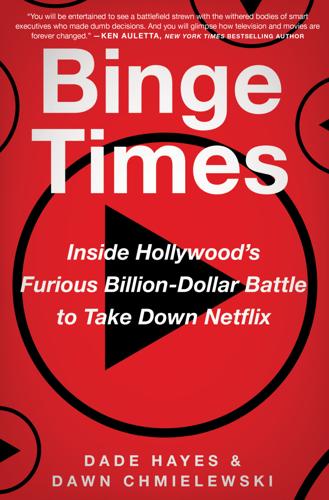
Binge Times: Inside Hollywood's Furious Billion-Dollar Battle to Take Down Netflix
by
Dade Hayes
and
Dawn Chmielewski
Published 18 Apr 2022
Or the voilà moment when Airbnb founders Brian Chesky and Joe Gebbia turned their loft into a bed-and-breakfast—renting out air mattresses at $80 a guest—as a way to cover their exorbitant San Francisco rent. Netflix’s saga starts, at least according to popular legend, with a moon shot. Cofounder Hastings describes getting socked with a $40 late fee on Apollo 13 at Blockbuster and wondering, “What if there were no late fees?” But the streaming giant’s origin story is more complicated than this convenient narrative, which neatly distilled the service’s initial consumer proposition of renting DVDs without worrying about return dates or late fees. The idea was hardly a bolt from the blue, says cofounder Randolph, but a concept arrived at over countless brainstorming sessions with Hastings as they logged miles together.
…
“We had this warehouse, which at the time had several hundred thousand DVDs in it, and Reed and I began riffing, ‘It’s kind of a shame that we have all these DVDs sitting here in a warehouse doing no good. I wonder if there was some way to store them in our customers’ houses?” said Randolph. “Can we let them keep the DVDs? Can they just hold on to them as long as they want? And when they want another one, they’ll just mail it back and we’ll replace it. There’ll be no due dates and no late fees.” The service Netflix introduced in 1999 changed the struggling startup’s fortunes, attracting 239,000 subscribers, winning loyalty from those who appreciated not only its novel approach to DVD rentals but also its recommendation engine and the community of cinephiles gathered around its website.

Blitzscaling: The Lightning-Fast Path to Building Massively Valuable Companies
by
Reid Hoffman
and
Chris Yeh
Published 14 Apr 2018
(As hard as it may be for some readers to comprehend, when we were in college, we would often drive to a Blockbuster Video store on a Friday or Saturday night, pay a couple of bucks to rent a VHS tape of a movie, and use a landline telephone to call Domino’s to order a pizza before popping the videotape into a VCR that was connected to a twenty-five-inch standard-definition cathode-ray tube.) DVD technology allowed Netflix to create a completely new business model. Rather than renting out individual movies and being charged exorbitant late fees if they failed to return the VHS tape in time, Netflix customers paid $20 per month for a subscription to “unlimited” movies—provided they checked out just one movie at a time. This allowed Netflix to eliminate Blockbuster’s widely loathed late fees and capture the powerful and certain revenue stream from the proven model of a subscription service. Netflix took off, and even went public as a DVD-by-mail service. But Hastings never lost sight of his ultimate vision for Netflix—on-demand television delivered via the Internet.
…
Remember the situation Reed Hastings faced when he started Netflix in 1997: the dial-up modems that connected most consumers to the Internet were far too slow to stream high-quality video content. So Netflix decided to compete with video stores like Blockbuster by offering a subscription service (with no hated late fees!) to mail movie DVDs to consumers’ homes. This meant that Netflix had to climb a steep learning curve in terms of both DVD-specific tasks, such as negotiating with the studios for access to movie DVDs and coordinating the logistics required to ship them to and from consumers, and developing new features like the ability to recommend movies based on past selections.
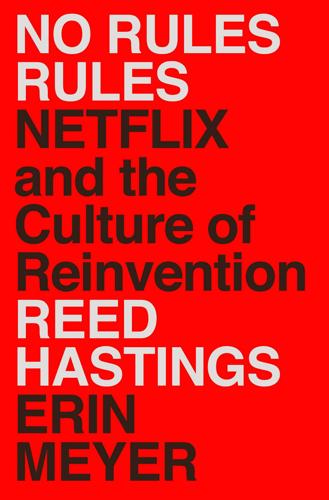
No Rules Rules: Netflix and the Culture of Reinvention
by
Reed Hastings
and
Erin Meyer
Published 7 Sep 2020
FIRST BUILD UP TALENT DENSITY . . . 1 A GREAT WORKPLACE IS STUNNING COLLEAGUES In the 1990s, I liked to rent VHS videos from the Blockbuster down the street from our house. I’d take two or three at a time and return them quickly to avoid late fees. Then one day I moved a pile of papers on the dining room table and saw a cassette that I’d watched weeks ago and forgotten to return. When I took the movie back to the store, the woman told me the fee: $40! I felt so stupid. Later, that got me thinking. Blockbuster made most of its margin from late fees. If your business model depends on inducing feelings of stupidity in your customer base, you can hardly expect to build much loyalty. Was there another model to provide the pleasure of watching movies in your own living room without inflicting the pain of paying a lot when you forgot to return them?
…
A Academy Awards, xvii, 165, 233 “accept or discard” feedback guideline, 31, 33 accidents and safety issues, management style and, 213–14, 269–71 “actionable” feedback guideline, 30, 31, 33, 36, 193, 257 “adapt” feedback guideline, 264 “aim to assist” feedback guideline, 30, 31, 33, 36 Airbnb, 136 Alexa and Katie, 145 alignment, 217–18, 231 on a North Star, 218–21 as tree, 221–31 Allmovie.com, 87 Amazon, 3, 81, 97, 136, 208, 232 Prime, 146, 148 amygdala, 21 Anitta, 97 annual performance reviews, 191 Antioco, John, xi–xii AOL, xviii, 236 Apple, xvii, 77, 97 “appreciate” feedback guideline, 31, 33 Arc de Triomphe, 268–69 Ariely, Dan, 83 Armstrong, Lance, 207, 232–33 Aronson, Elliot, 124 Aspen Institute, 107–8 autonomy, 133 see also decision-making; decision-making approvals, eliminating Avalos, Diego, 151 B Ballad of Buster Scruggs, The, xviii Ballmer, Steve, 122–23 Baptiste, Nigel, 64–66, 68 Bazay, Dominique, 223, 224, 227–31 Bde Maka Ska, 267, 268 Becker, Justin, 35–36 belonging cues, 24–25 bet-taking analogy, 138–40, 153–57, 225–27 Bird Box, 165 Blacklist, The, 26 Black Mirror, 157–59 Blitstein, Ryan, 52 Blockbuster, 3, 171, 236 bankruptcy of, xii, xviii late fees of, 3 Netflix’s offer to, xi–xii size of, xi, xii bonuses, 80–84 Booz Allen Hamilton, 81 brain: feedback and, 20, 21 secrets and, 103 Branson, Richard, xxiv, 50 Brazil, 137, 150, 224–26, 243, 247, 249–51, 257, 264 Brier, David, xxiv brilliant jerks, 34–36, 200 Brown, Brené, 123 Bruk, Anna, 123–24 Bull Durham, 169 Bullock, Sandra, 165 bungee jumping, 194–95 C Canada, 241 candor, 18–21, 141, 175 cultural differences around the world, 250-55, 260, 263–64 culture of, 22–23 dentist visits compared to, 190–91 as disliked but needed, 20–22 failure to speak up, 18, 27, 141 increasing, xx, xxi, 1, 12–37, 72, 100–127, 188–205 jerks and, 34–36 misuse of, 29, 30, 36 “only say about someone what you will say to their face,” 15, 189–90 performance and, 17–20 and readiness to release decision-making controls, 133–35 saying what you really think with positive intent, 13–37 see also feedback; transparency Carey, Chris, 181 Caro, Manolo, 137 Caruso, Rob, 113–14 Casa De Papel, La, xviii celebrating wins, 140, 152 Chapman, Jack, 86 Chase, Chevy, 222 cheating, 62–64 Chelsea, 115–16 children’s programming, 144–45, 226–31 Choy, Josephine, 252–54, 257 Christensen, Nathan, 51 circle of feedback (360-degree assessments), 26–27, 189–205 benefits of, 202–3 discussion facilitated by, 194 in Japan, 256 live, 197–203 stepping out of line during, 200–201 tips for, 199–200 written, names used in, 191–97 Cobb, Melissa, 221–27, 231 Coen, Joel and Ethan, xii Coherent Software, 101, 104 collaboration, 170, 178 Colombia, 251 Comparably, xvii competitiveness, internal, 177–78 compliments and praise, 21, 23 computer software, 77–78, 216 conformity, 141–42 connecting the dots, xxiv first dot, 10–11 second dot, 36 third dot, 69 fourth dot, 98 fifth dot, 125 sixth dot, 160 seventh dot, 185 eighth dot, 203–4 ninth dot, 233 last dot, 264–65 consensus building, 149 contagious behavior, 8–10 context, see leading with context, not control contract signing, 149–51 control, leadership by, 209 ExxonMobil example of, 213–14 leading with context versus, 209–12 see also leading with context, not control controls, removing, xx, xxi, 1, 38–72, 128–61, 206–36 decision-making approvals, 129–61 bet-taking analogy in, 138–40, 153–57, 225–27 Informed Captain model in, 140, 149–52, 216, 223, 224, 231, 248 and picking the best people, 165–66 readiness for, 133–35 signing contracts, 149–51 travel and expense approvals, 55–72 cheating and, 62–64 company’s best interest and, 58, 59, 61, 66, 68–69 context and, 59–62 Freedom and Responsibility ethos and, 60–62 frugality and, 64–69 vacation policy, xv, 39–53, 56, 69–70 freedom and responsibility and, 52–53 Hastings’ nightmares about, 40–41, 42, 44 Hastings’ vacations, 44, 45, 47 Japanese workers and, 46–47 leaders’ modeling and, 42–47 loss aversion and, xv–xvi and setting and reinforcing context to guide employee behavior, 48–49 value added by, 50–52 see also leading with context, not control corporate culture, xiii of Netflix, xiii, xxii, xxiii, 45 Netflix Culture Deck, xiii–xvi, 172–73 Costa, Omarson, 150–51 coupling: alignment and, 218 loose versus tight, 215–17 Coyle, Daniel, 24 creative positions, 78–79, 83–84 criticism (negative feedback), 19–21, 23 belonging cues and, 24 brain and, 20, 21 cultural differences around the world, 251, 261 as disliked but needed, 20–22 language used in, 251–52 responding to, 24, 31 upgraders and downgraders in, 251–52 see also feedback Crook-Davies, Danielle, 19–20 Crown, The, xvii Cryan, John, 82–83 Cuarón, Alfonso, xii, 165 cultural differences around the world, see global expansion and cultural differences Culture Code, The (Coyle), 24 culture map, 242–50 Culture Map, The (Meyer), xxii, 19, 242–50 culture of freedom and responsibility, see Freedom and Responsibility D Daring Greatly: How the Courage to Be Vulnerable Transforms the Way We Live, Love, Parent, and Lead (Brown), 123 Dark, xvii days off, 39–40 see also vacation policy, removing decision-making: dispersed, 216–17 innovation and, 130, 131, 135, 136 and leading with context, 210, 216, 217 to please the boss, 129–30, 133, 152–53 pyramid structure for, 129, 221–23 spreadsheet system and, 143–44 talent density and, 131 transparency and, 131 decision-making approvals, eliminating, 129–61 bet-taking analogy in, 138–40, 153–57, 225–27 Informed Captain model in, 140, 149–52, 216, 223, 224, 231, 248 and picking the best people, 165–66 readiness for, 133–35 signing contracts, 149–51 Del Castillo, Kate, 138 Del Deo, Adam, 207–9, 232–33 Disney, 144, 221, 222, 226, 227 dissent, farming for, 140–44, 158 diversity, 241 Dora the Explorer, 145 Dormen, Yasemin, 157–59 dot-com bubble, 4 dots, see connecting the dots downloading, 146–48 dream teams, 76 DreamWorks, 145, 221, 226 driver feedback, 22 Dutch, Netherlands, 242, 243, 246, 248, 251, 261–63 DVDs, 3–4, 5, 129 Qwikster and, 140–42 shift to streaming from, xii, xvii, 140–41, 236 E Edmondson, Amy, xv Eichenwald, Kurt, 176 Eisner, Michael, 195 elephants, penguins versus, 174 Elite, xvii Emmy Awards, xvii, 145 “Emperor’s New Clothes” syndrome, 23–29 empowerment, 109, 133, 134 see also decision-making; decision-making approvals, eliminating; Freedom and Responsibility Engadget, 158 Enron, xiii entrepreneurship, 138 error prevention, and management style, 213–14, 220, 269–71 Escobar, Pablo, 132 Estaff meetings, 218–19, 243 Evening Standard, 25 Eventbrite, 50 expenses, see travel and expenses; travel and expense approvals, removing experimentation, 138 Explorer project, 154–55, 157 Express, 158 ExxonMobil, 213–14 F Facebook, xiii, 77, 97, 130, 137, 195 failures, 140, 152–59 asking what learning came from the project, 153, 155 not making a big deal about, 153–55 sunshining of, 153, 155–59 family business metaphor, 166–68 moving to sports team metaphor from, 168–70, 173–74 farming for dissent, 140–44, 158 Fast Company, xxiv, 213 fear of losing one’s job, xv, 178–80, 183–84 Fearless Organization, The (Edmondson), xv FedEx, 139 feedback, 14–17, 139, 175, 190, 240 annual performance reviews and, 191 belonging cues and, 24 brain’s response to, 20, 21 circle of (360-degree assessments), 26–27, 189–205 benefits of, 202–3 discussion facilitated by, 194 in Japan, 256 live, 197–203 stepping out of line during, 200–201 tips for, 199–200 written, names used in, 191–97 cultural differences and, 250-57, 260, 261–64 for drivers, 22 “Emperor’s New Clothes” syndrome and, 23–29 failure to speak up with, 18, 27, 141 4A guidelines for, 29–36, 255, 264 accept or discard, 31, 33 actionable, 30, 31, 33, 36, 193, 257 adding 5th A to (adapt), 264 aim to assist, 30, 31, 33, 36 appreciate, 31, 33 cultural differences and, 260 for giving feedback, 30 for receiving feedback, 31 frequency of, 18 Hastings and, 26–29 honesty in, 18; see also candor Japanese culture and, 251–57 loop of, 22–23 Meyer and, 19, 32 negative (criticism), 19–21, 23 belonging cues and, 24 brain and, 20, 21 cultural differences around the world, 251, 261 as disliked but needed, 20–22 language used in, 251–52 responding to, 24, 31 upgraders and downgraders in, 251–52 positive, brain and, 21 responding to, 24, 31 and speaking and reading between the lines, 253 spreadsheet system for gathering, 143–44 survey on, 21–22 teaching employees how to give and receive, 29–32 from teammates, 199 when and where to give, 31–34 see also candor Felps, Will, 8–9 firing, see letting people go Fisher Phillips, 50 five-year plans, 219–20 Flint, Joe, 178 flexibility, and leading with context or control, 220, 221 Fogel, Bryan, 207–8, 233 4K ultra high definition televisions, 65–66 Fowler, Geoffrey, 65–66 Fox, 221 France, 240, 251 Paris, 268–69 Freedom and Responsibility (F&R), xx–xxi, 191, 236, 267, 268 expenses and, 60–62 first steps to, 1–72 Informed Captain model in, 140, 149–52, 216, 223, 224, 231, 248 next steps to, 73–161 techniques to reinforce, 163–236 vacations and, 52–53 weight of responsibility in, 150–52 Friedland, Jonathan, 196 Fuller House, 145 G Game of Thrones, 131–32 Garden Grove, Calif., 22 Gates, Bill, 78 General Electric (GE), 177–78 Germany, 147–48, 250–51 Gizmodo, 178 Gladwell, Malcolm, 142 Glassdoor, xv, 50 global expansion and cultural differences, 237–65, 239–65 adjusting your style for, 257–61 Brazil, 137, 150, 224–26, 243, 247, 249–51, 257, 264 candor and, 250–55, 260, 263–64 culture map, 242–50 feedback and, 250–57, 260, 261–64 Google and, 240–41 Japan, 46–47, 183, 224, 225, 257, 261 in culture map, 243, 247, 248 feedback and criticism in, 251–57 Japanese language, 252–53 360 process and, 256 Netherlands, 242, 243, 246, 248, 251, 261–63 Schlumberger and, 240–41 Singapore, 243, 246, 248, 251, 257–59, 261, 264 trust and, 248, 249 Golden Globe Awards, xvii, 76 Goldman Sachs, 177 Golin, 50 Google, xvii, 77, 94–96, 98, 136 global expansion of, 240–41 gossip, 189 Guillermo, Rob, 207 H Handler, Chelsea, 115–16 happiness, xvii Harvard Business Review, xxii Hastings, Mike, 87 Hastings, Reed: childhood of, 10, 13 at Coherent Software, 101, 104 downloading issue and, 146–48 feedback and, 26–27 interview with, 173–80 in leadership tree, 224–25 marriage of, 13–15 Meyer contacted by, xxii–xxiii Netflix cofounded by, xi, 3–4 in Netflix’s offer to Blockbuster, xi–xii in Peace Corps, xxii, xxiii, 14, 101, 239–40 Pure Software company of, xviii–xix, xxiv, 3, 4, 6, 7, 13–14, 55, 64, 71, 101, 122, 123, 236 Qwikster and, 140–42 HBO, 113–14, 208 Hewlett-Packard (HP), 66–67 hierarchy of picking, 165–66 Hired, xvii hiring: hierarchy of picking and, 165–66 talent density and, see talent density honesty, xvi, xxiii, 178 and spending company money, 58–59 see also candor; transparency hours worked, 39 House of Cards, xvii, 65, 75, 171, 236 HubSpot, xvii, 50 Huffington Post, xxii Hulu, 208, 232 humility, 123 Hunger Games, The, 176 Hunt, Neil, 41, 45, 94, 98, 154, 196 downloads and, 146, 148 and Netflix as team, not family, 173–74 360s and, 197, 198 vacations of, 41 I Icarus, 207–8, 232–33 India, 83, 84, 147–48, 224–26 Mighty Little Bheem in, 228–31 industrial era, 269, 271 industry shifts, xvii–xviii, xix Informed Captain model, 140, 149–52, 216, 223, 224, 231, 248 innovation, xv, xix, xxi, 84, 135–36, 155, 271–72 decision-making and, 130, 131, 135, 136 and leading with context or control, 214–15, 217 Innovation Cycle, 139–40 asking what learning came from the project, 153, 155 celebrating wins, 140, 152 failures and, 140, 152–59 farming for dissent, 140–44, 158 not making a big deal about failures, 153–55 placing your bet as an informed captain, 140, 149–52 socializing the idea, 140, 144–45, 158, 159 spreadsheet system and, 143–44 sunshining failures, 153, 155–59 testing out big ideas, 140, 146–48 International Olympic Committee, 232 internet, 146–48, 154 internet bubble, 4 iPhone, 130 Italy, 131–32 J Jacobson, Daniel, 166–68 Jaffe, Chris, 153–57 Japan, 46–47, 183, 224, 225, 257, 261 in culture map, 243, 247, 248 feedback and criticism in, 251–57 Japanese language, 252–53 360 process and, 256 jerks, 34–36, 200 Jobs, Steve, xxiv, 130 Jones, Rhett, 178 K karoshi, 46 kayaking, 180 Keeper Test, xiv, 165–87, 240, 242 Keeper Test Prompt, 180–83 Key Performance Indicators (KPIs), 81, 191, 209 Kilgore, Leslie, 14–15, 81, 94, 171 expense reports and, 61–62 on hiring and recruiters, 95–96 “lead with context, not control” coined by, 48, 208–9 new customers and, 81–82 signing contracts and, 149–50 360s and, 192, 193, 197, 198 King, Rochelle, 27–29 Kodak, xviii, 236 Korea, 224, 225 Kung Fu Panda, 221 L Lanusse, Adrien, 148 Latin America, 136, 241, 249 Brazil, 137, 150, 224–26, 243, 247, 249–51, 257, 264 Lawrence, Jennifer, 176 lawsuits, 175 layoffs at Netflix, 4–7, 10, 77, 168 leading with context, not control, 48, 207–36 alignment in, 217–18, 231 on a North Star, 218–21 as tree, 221–31 control versus context, 209–12 decision-making in, 210, 216, 217 Downton Abbey-type cook example, 211–12, 218 error prevention and, 213–14, 220, 269–71 ExxonMobil example, 213–14 Icarus example, 207–8, 232–33 innovation and, 214–15, 217 Kilgore’s coining of phrase, 48, 208–9 and loose versus tight coupling, 215–17 Mighty Little Bheem example, 228–31 parenting example, 210–11 spending and, 59–62 talent density and, 212, 213 Target example, 213–15 lean workforce, 79 letting people go, 173–76 “adequate performance gets a generous severance,” xv, xxii, 171, 175–76, 242 employee fears about, xv, 178–80, 183–84 employee turnover, 184–85 in Japan, 183 Keeper Test, xiv, 165–87, 240, 242 Keeper Test Prompt, 180–83 lawsuits and, 175 at Netflix, 185 Netflix layoffs in 2001, 4–7, 10, 77, 168 post-exit communications, 117–20, 183–84 quotas for, 178 LinkedIn, 50, 51, 137 Little Prince, The (Saint-Exupéry), 215 loose versus tight coupling, 215–17 Lorenzoni, Paolo, 131–33, 135, 138 loss aversion, xv–xvi Low, Christopher, 258–60 M Mammoth, 51 Management by Objectives, 209 Man of the House, 222 Massachusetts Institute of Technology, 83 McCarthy, Barry, 14–15, 56 McCord, Patty, 4–7, 9, 10, 15, 27–28, 41, 53, 71, 173 all-hands meetings and, 108 departure from Netflix, 171 expense policy and, 55, 60–61 financial data and, 110 salary policy and, 78, 81, 94, 96 team metaphor and, 169 360s and, 197–99 vacation policy and, 40, 43, 45, 52–53 Memento project, 156, 157 Mexico, 136–38 Meyer, Erin, xxii The Culture Map, xxii, 19, 242–50 Hastings’ message to, xxii–xxiii keynote address of, 19, 32 Netflix employees interviewed by, xxiii, 19–20 in Peace Corps, xxii micromanaging, 130, 133, 134 Microsoft, 78, 122, 176–78 Mighty Little Bheem, 228–31 Mirer, Scott, 200–201 mistakes, 121–25, 271–72 distancing yourself from, 157 management style and, 213–14, 220, 270 sunshining of, 157 see also failures Morgan Stanley, 123 Moss, Trenton, 50–51 Mr.
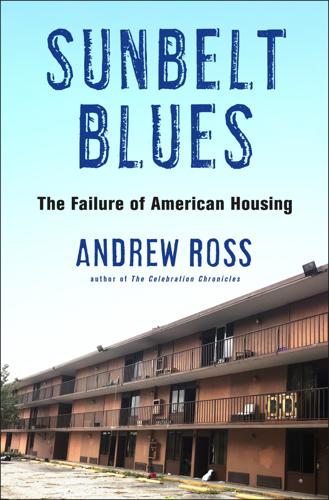
Sunbelt Blues: The Failure of American Housing
by
Andrew Ross
Published 25 Oct 2021
Over those same years, large Wall Street landlords like Invitation Homes (owned by the Blackstone Group) and American Homes 4 Rent were also being sued for a litany of complaints very similar to those in Celebration: negligent maintenance for mold, water penetration, infestations, and defective fixtures. There were also complaints of fee stacking—such as charging a late fee for nonpayment of a previous late fee—and of price gouging on rents. Stories about chronic neglect by corporate owners emerged across the entire housing landscape, from rural towns to urban sprawl. In its marketing materials, Invitation Homes boasted of providing a “worry free” living environment with “peace of mind” through “exceptional resident services,” including “24/7 emergency maintenance.”20 Yet tenants experienced service more akin to that of a slumlord, with long waits for major repairs, and most other maintenance jobs left in their own hands.
…
In September 2020, a large Orlando homeless shelter reported that more than 40 percent of those who had sought admittance over the previous two months were experiencing homelessness for the first time.26 The federal moratoriums lasted longer but did not bring foreclosures and evictions to a halt because they only covered mortgage holders with government-backed loans or renters who could prove hardship directly caused by COVID-19.27 By January 2021, the nation’s delinquent renters—as many as ten million people—owed a whopping $57 billion in back rent, utilities, and late fees.28 As small landlords faced ruin, market predators circled overhead, waiting to swoop, for the second time in a decade. By June 2020, private equity groups had amassed almost $1.4 trillion of disposable capital in expectation of another fire sale of real estate. They referred to it as “dry powder.”29 As the CEO of Starwood, one of the leading firms, reminded his shareholders: “It’s really ugly … but obviously when it’s really ugly, it’s a good time to invest.”30 Enriched for a decade by tax cuts, loopholes, and exemptions, and further fattened by giveaways embedded in the federal stimulus program, the large corporate landlords and institutional investors were itching to once again profit from the distress of others.
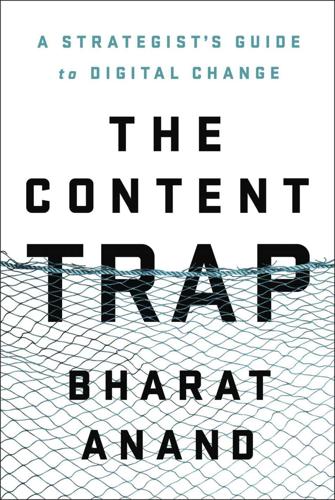
The Content Trap: A Strategist's Guide to Digital Change
by
Bharat Anand
Published 17 Oct 2016
Anna Hazare’s Hunger Fasts Rock India,” Time, December 7, 2011; Chandrahas Choudhury, “Indians Divide Over Policing a Watchdog: World View,” Bloomberg Vie w, June 21, 2011; Sandeep Phukan and Sunil Prabhu, “Lokpal Bill Passed in Lok Sabha, but No Constitutional Status,” NDTV, last modified December 28, 2011. forty-dollar late fee Willy Shih et al., “Netflix,” HBS No. 607-138 (Boston: Harvard Business School Publishing, rev. April 27, 2009); the forty-dollar late fee has been disputed by other accounts as the story behind Netflix’s creation, see Gina Keating’s book for a detailed account: Gina Keating, Netflixed: The Epic Battle for America’s Eyeballs (New York: Portfolio/Penguin, 2012). Blockbuster chose Greg Satell, “A Look Back at Why Blockbuster Really Failed and Why It Didn’t Have To,” Forbes, September 5, 2014; Luis Alfonso Dau and David T.
…
A single person, through actions that might be hardly characterized as novel or unprecedented—after all, street fights and hunger strikes have been common in these countries for decades—sparks a vast change in politics and society unimaginable even a decade earlier; a small trigger has a large impact. The second feature, passive management response, is also pervasive in the media. Netflix, started in 1997, was inspired by a forty-dollar late fee paid by founder Reed Hastings for a Blockbuster rental. Blockbuster chose not to react. At the time it seemed a rational response: after all, six years later Blockbuster’s revenues exceeded $5 billion—more than ten times as much as Netflix’s. By the time management decided to react to Netflix, it was too late.
…
It’s tempting to think that their webs of connected choices are peculiar to analog worlds. That’s not the case. Success in digital worlds often comes from the same factors. Reed Hastings founded Netflix in 1999 with a simple proposition: Order up to three DVDs at a time from your computer, get them shipped quickly, and hold on to them for as long as you like, with no late fees. Over the next ten years Netflix grew impressively. By 2008 it had $1.3 billion in revenue, nearly ten million subscribers, and $83 million in profits. Its success, many observers noted, came from a combination of factors: a simple and elegant customer interface, a powerful algorithm for recommending movies to subscribers, an elegant “queuing” tool that allowed customers to record their preferences for up to fifty movies in advance rather than each time they returned a DVD, and—most important—its decision to aggregate, obtaining content elsewhere rather than producing its own.
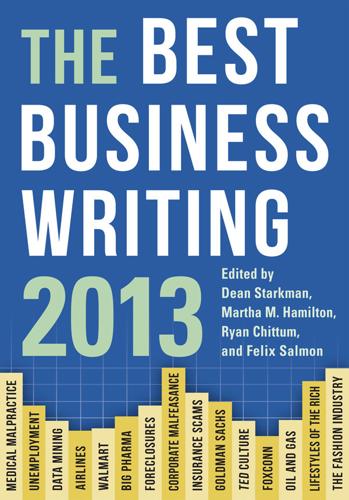
The Best Business Writing 2013
by
Dean Starkman
Published 1 Jan 2013
That amount would then be due on top of what she owed. Experts say these terms were especially punitive even for subprime loans, which typically gave borrowers more time and penalized them less for being late. While Ramos no longer has records showing how much she paid in late fees, an August 2008 breakdown by Wilshire of unpaid charges on her account shows outstanding late fees of $770 and a returned-check charge of $50—an extra $820 on top of its base of $1,300. If Ramos or other troubled homeowners could somehow scrape together the money to pay such fees, great. But the true genius of the business model is that it didn’t matter whether borrowers could pay the fees.
…
The family has even been joined by a cousin of Ramos’s, a retired federal employee who lives there with her husband, because what’s left of her retirement wasn’t enough to live comfortably elsewhere. Four months after Ramos left Florida, Wilshire’s attorneys again sought to foreclose on the home. Together with the various foreclosure and late fees, the interest that had been accruing since Ramos made her last payment in early 2008 added up to a debt of $314,000—about $52,000 more than the original loan. While the home had been appraised at $403,000 in late 2006 when the loan was made, it was worth nowhere near that when it was put up for auction in December 2009.
…
Our home has been worth $60,000 since 2008. We put down $30,000, completed $10,000 in upgrades in the first year and paid $40,000 in payments in the first two years before the modification mess occurred. Our total investment: $80,000. The house is worth $60,000 and we now owe more than we financed due to late fees, attorney’s fees, and mortgage payments. We have been forced into bankruptcy because there is no other option at this point. Sure, one of the many servicers that have managed our loan has offered us a modification, but we would have to sign our rights to bankruptcy away, pay their attorney’s fees, and accept many other conditions that our attorneys have advised us to not agree to.
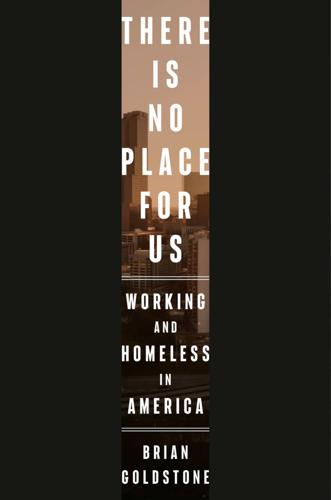
There Is No Place for Us: Working and Homeless in America
by
Brian Goldstone
Published 25 Mar 2025
These real estate behemoths employed a stock set of tactics in attempting to “unlock value” from their acquisitions: hiking rents, skimping on maintenance and security and upkeep, slashing staffing costs, tacking on extra fees. Most startlingly, evictions were becoming increasingly automated. An algorithm could determine the course of action: if the rent was three days late, an eviction notice automatically went out, a late fee was tacked on, and the tenant was saddled with any court costs incurred by a filing. This allowed the new breed of mega-landlords to aggregate resources at scale—and to remove decisions involving rent collection and eviction from the messy realm of human interaction. All this was aimed at rapidly maximizing profits so investors could turn around and sell the property at a premium.
…
Maurice and Natalia had a week to “answer” the dispossessory notice if they wished to avert a default judgment. In the blank space beside I state the following in response to Plaintiff’s claim, Natalia simply wrote: “Will pay.” They received a court date of November 5, which gave them less than three weeks to come up with not just October’s rent and the $150 late fee that had been added to it but November’s rent as well. It seemed an impossible task. On Facebook, Natalia alluded to this turn of events. “Your life literally can change overnight,” she posted. For the first time ever, she found herself searching online for emergency rent support. She came across the Community Assistance Center (CAC), a nonprofit that, according to its website, prevented approximately 675 households in Sandy Springs and Dunwoody from being evicted annually.
…
Pink met with a group of nine residents and their children to make protest signs, while Eboni and Natalie drafted a demand letter that would be sent to Efficiency’s corporate office and the media, along with a press release. The letter called for an end to lockouts during the pandemic and the cancellation of late fees. It also insisted that Efficiency fix the plumbing to prevent flooding; clean up the piles of trash; remove mold infestations; allow former residents to retrieve their mail; and compensate families who were wrongfully evicted. Everybody, it seemed, was doing something, whether printing flyers and coordinating transportation or recruiting additional residents to join the group.

The Start-Up of You: Adapt to the Future, Invest in Yourself, and Transform Your Career
by
Reid Hoffman
and
Ben Casnocha
Published 14 Feb 2012
THE PATH TO THE FUTURE In 1997 Reed Hastings, a software entrepreneur living in the hills of Silicon Valley, was faced with a problem. He had rented Apollo 13 from a video store, returned it days late, and was dealt a late fee so nasty that he was too embarrassed to tell his wife what had happened. His entrepreneurial instinct kicked in: What if you could rent a movie and never face the risk of a late fee? So he began researching the industry and learned that the new DVD technology was light and cheap to ship.14 He realized that the shift toward e-commerce, in concert with the DVD revolution, could be a huge opportunity.
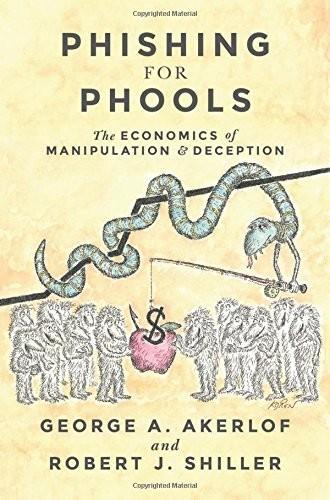
Phishing for Phools: The Economics of Manipulation and Deception
by
George A. Akerlof
,
Robert J. Shiller
and
Stanley B Resor Professor Of Economics Robert J Shiller
Published 21 Sep 2015
How is this cost divided among different types of payment? We have estimates of three components of costs. A rough division of these payments is that about one-half consists of interest paid on overdue accounts; about one-third is for the interchange fees; and another one-sixth is for miscellaneous penalties, especially including late fees.34 An enterprising blogger, Sean Harper, a former student of Freakonomics’s Steven Levitt, has given us a third cut. He calculated the interchange fees that a merchant would pay if you handed her your Citicorp Visa Rewards Card.35 For a $1.50 pack of gum purchased at a convenience store, the fee was 40 cents; for a $30 tank of gas, $1.15; for a $100 grocery purchase, $2.05.
…
They buy their magic pills, but at only one-third of the total cost. Next come the consumers, blithely purchasing their groceries, footwear, and whatever else, with the credit card extracting high rates of interest from those with overoptimistic expectations regarding how they will pay the bill when it comes. And then insult is added to injury with the late fees and the nuisance fees. At each and every stage, the competitive drive for profits plays on our weaknesses. FIVE Phishing in Politics All of us have an experience—with a past girlfriend or boyfriend, perhaps—where we can look back with the wisdom of a few more years, and can now articulate clearly what we sensed only vaguely at the time.
…
We get a figure of “$48 billion a year” for interchange fees from John Tozzi, “Merchants Seek Lower Credit Card Interchange Fees,” Businessweek Archives, October 6, 2009, accessed May 2, 2015, http://www.bloomberg.com/bw/stories/2009-10-06/merchants-seek-lower-credit-card-interchange-fees. These three numbers add up to $171 billion, which is in the ballpark, relative to the aggregate estimate for 2009 of $167 billion for that year from Robin Sidel, “Credit Card Issuers Are Charging Higher.” Viewing the late fees and the interchange fees as roughly constant, but the interest fees as variable, we get our characterization of the division (of the 2012 $150 billion of revenues). 35. http://truecostofcredit.com/400926. This website has now closed. Harper later started a consulting firm (subsequently taken over) that advised merchants on how to minimize their exchange fees.
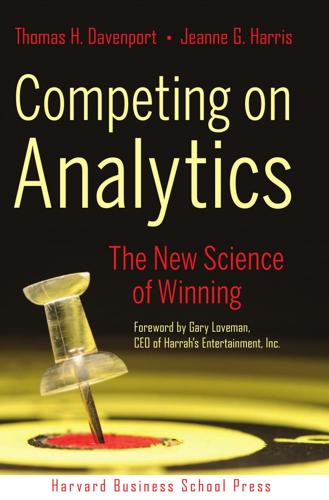
Competing on Analytics: The New Science of Winning
by
Thomas H. Davenport
and
Jeanne G. Harris
Published 6 Mar 2007
Part One THE NATURE OF ANALYTICAL COMPETITION 1 THE NATURE OF ANALYTICAL COMPETITION Using Analytics to Build a Distinctive Capability IN 1997, A THIRTY-SOMETHING man whose resume included software geek, education reformer, and movie buff rented Apollo 13 from the biggest video-rental chain on the block—Blockbuster—and got hit with $40 in late fees. That dent in his wallet got him thinking: why didn’t video stores work like health clubs, where you paid a flat monthly fee to use the gym as much as you wanted? Because of this experience—and armed with the $750 million he received for selling his software company—Reed Hastings jumped into the frothy sea of the “new economy” and started Netflix, Inc.
…
The movie delivery company, which has grown from $5 million in revenues in 1999 to about $1 billion in 2006, is a prominent example of a firm that competes on the basis of its mathematical, statistical, and data management prowess. Netflix offers free shipping of DVDs to its roughly 6 million customers and provides a return shipping package, also free. Customers watch their cinematic choices at their leisure; there are no late fees. When the DVDs are returned, customers select their next films. Besides the logistical expertise that Netflix needs to make this a profitable venture, Netflix employs analytics in two important ways, both driven by customer behavior and buying patterns. The first is a movie-recommendation “engine” called Cinematch that’s based on proprietary, algorithmically driven software.
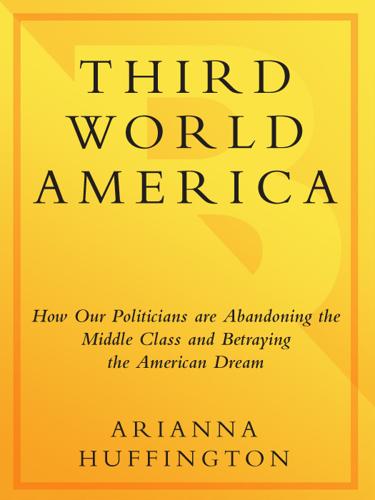
Third World America: How Our Politicians Are Abandoning the Middle Class and Betraying the American Dream
by
Arianna Huffington
Published 7 Sep 2010
The other twenty-nine and a half pages are the tricks and traps. I teach contract law at Harvard Law School,” she continues, “and I can’t understand my credit card contract. It’s just not designed to be read.” As a result, for years the credit card companies have been fattening their bottom lines with an ever-widening array of fees: late fees, cash-advance fees, balance-transfer fees, over-the-limit fees. Fees now account for 39 percent of card issuers’ revenue.119 In fact, last year, lenders collected more than $20 billion in penalties and fees.120 And even with the passage of the new credit card regulations that took effect in early 2010, banks are coming up with sneaky new ways to soak customers, including (if you can believe it) an “inactivity fee” for not using their card!
…
And the banks, of course, know the havoc it would create in most peoples’ lives to have to regularly close down their credit cards and seek new ones. However soul sapping it may be, you have to read all the stuff that comes from your credit card company—including the small print about service fees on top of late fees on top of “inactivity” fees. If you can, set up automatic bill pay so you don’t miss a payment. Because fees account for 39 percent of credit card issuers’ revenue, the banks will keep dreaming up new ways to trick us that are not covered, or even contemplated, by existing laws.65 And the new law doesn’t prevent banks from gouging their credit card customers with sky-high interest rates.66 Senator Bernie Sanders, whose attempts at capping credit card interest rates have been voted down by his colleagues, says, “When banks are charging thirty percent interest rates, they are not making credit available.67 They are engaged in loan sharking”—also known as usury.

Discardia: More Life, Less Stuff
by
Dinah Sanders
Published 7 Oct 2011
Talk with the companies behind all your monthly bills and see if there's a way to have the minimum payment automatically charged to your bank account or credit card. The key word here is “minimum.” You should pay more if you can to avoid interest charges, but always pay the least possible amount to avoid late fees. Then, while you have them on the phone, see if you can get your bills by email. This keeps paper from landing in your house and gives you the earliest possible warning if a bill amount is in error. Plan ahead and make checklists or kits to ensure repeatedly that you have what you need when and where you need it.
…
If the backlog awaiting your attention isn’t pressuring you, that’s excellent; however, when it does, try some of these ideas: Consider canceling your Netflix subscription and not using TiVo's recommendation feature. For many, what matters most about their Netflix account is the queue—a someday-maybe list of movies to watch—so just keep the list if you’re not keeping up with incoming films. Take that subscription money (or saved late fees if you’ve been renting from a traditional video store or library) and put 80% of it into savings. Invest the rest in really good chocolate. I bet you'll take care of that tonight! Use CatalogChoice.org Slow that cascade of advertising dripping from your mailbox. Contemplate canceling or reducing magazine and newspaper subscriptions—at least abandon any feeling of obligation that you have to read the whole thing.
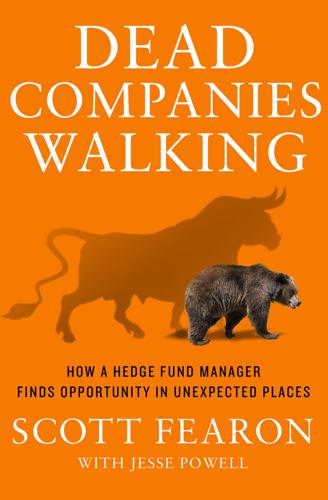
Dead Companies Walking
by
Scott Fearon
Published 10 Nov 2014
By the time I got to Dallas, Blockbuster and its storefront model were clearly the horse-drawn carriages of the movie rental business. Netflix and its web-based format were the equivalents of Model A cars. Unlike groceries or prescription pills, consumers liked picking out their DVD rentals online and receiving them in the mail. And they especially liked paying a flat monthly price instead of the exorbitant late fees Blockbuster had been getting fat on for decades. There was no getting around these truths. Netflix already had millions of subscribers in 2007. Just about every other major movie rental chain had already gone broke as a result or was on the brink of it. And yet everyone at Blockbuster did their best to come up with new ways to pretend that things hadn’t changed.
…
But all of the synergy in the world cannot replace the lifeblood of any business: growing revenues. The real tragedy of Blockbuster’s history is that it almost escaped its fate. For a little while after Icahn took over, its Total Access online service managed to slow Netflix’s momentum. But without late fees and per-movie charges, it was never going to be profitable for the company—not with the burden of thousands of store leases and tens of thousands of employee salaries to pay. But instead of closing as many stores as they could to cut costs and putting everything they could into its online presence, Blockbuster’s leadership went backward and decided to turn its stores into glorified candy racks.
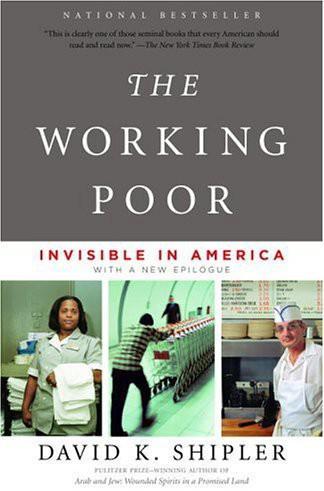
The Working Poor: Invisible in America
by
David K. Shipler
Published 12 Nov 2008
Since her credit rating was not exactly AAA, she was being charged up to 23.999 percent interest. What’s more, while she was faithfully paying the finance charge and minimum almost every month, she did not always get her salary in time to meet the deadline; as a result, she gradually realized, the card companies were adding late fees to her principal, then charging the exorbitant interest on that ever-growing principal. Long after she stopped using the cards, the balance continued to rise. This has become a chronic problem across the country as lenders search credit records for minor delinquencies to label them “subprime.” If you’re in that category you get charged higher fees and interest, but you may not know it, because few states require lenders to reveal the score that determines a consumer’s credit rating, even when the borrower sees his credit report.
…
Christie was a hefty woman who laughed more readily than her predicament should have allowed. She suffered from stress and high blood pressure. She had no bank account because she could not keep enough money long enough. Try as she might to shop carefully, she always fell behind on her bills and was peppered with late fees. Her low income entitled her to food stamps and a rental subsidy, but whenever she got a little pay raise, government agencies reduced the benefits, and she felt punished for working. She was trapped on the treadmill of welfare reform, running her life according to the rules of the Personal Responsibility and Work Opportunity Reconciliation Act of 1996.
…
The same day, she put $5 worth of gas in her car, and the next day spent $6 of her own money to take the day-care kids to the zoo. The eighth was payday, and her entire $330 check disappeared in a flash. First, there was what she called a $3 “tax” to cash her check, just one of several such fees for money orders and the like—a penalty for having no checking account. Immediately, $172 went for rent, including a $10 late fee, which she was always charged because she never had enough to pay by the first of the month. Then, because it was October and she had started to plan for Christmas, she paid $31.47 at a store for presents she had put on layaway, another $10 for gasoline, $40 to buy shoes for her two kids, $5 for a pair of corduroy pants at a secondhand shop, another $5 for a shirt, $10 for bell-bottom pants, and $47 biweekly for car insurance.

The Card Catalog: Books, Cards, and Literary Treasures
by
Library Of Congress
and
Carla Hayden
Published 3 Apr 2017
After shipping his library to Washington, D.C., Jefferson reported to Smith, founder of the National Intelligencer, “Our tenth and last wagon load of books goes off today . . . and an interesting treasure is added to your city . . . unquestionably the choicest collection of books in the U.S. and I hope it will not be without some general effect on the literature of the country.” Record of Books Drawn by Members of Congress for 1815. This record documents the titles members of Congress requested, when the books were checked out, and when they were returned. Members were charged a late fee of a dollar a day if the book was late. Ledgers offer a fascinating look at the erudite reading habits of Congress and some U.S. presidents. The range in subject matter was eclectic—from politics, philosophy, and science to poetry and literature. Catalogue of Books, Maps, and Charts, Belonging to the Library of the Two Houses of Congress.

What's Mine Is Yours: How Collaborative Consumption Is Changing the Way We Live
by
Rachel Botsman
and
Roo Rogers
Published 2 Jan 2010
Hastings first got the idea for Netflix after going to Blockbuster one day and discovering that his family had been six weeks late in returning Apollo 13. The overdue cassette cost him $40 in late fees. It was later, on his way to the gym, that he had his eureka moment when he realized his fitness club had a much better business model. “You could pay $30 or $40 a month and work out as little or as much as you wanted.” He reasoned that there had to be a similar way “to make money renting movies without gouging customers on late fees.”10 Hastings, who is now in his late forties and lives with his wife and two kids in Santa Cruz, likes movies but admits he is no movie buff.
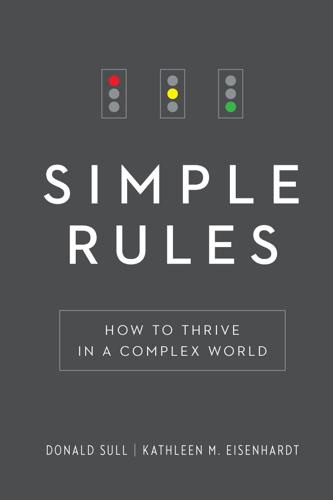
Simple Rules: How to Thrive in a Complex World
by
Donald Sull
and
Kathleen M. Eisenhardt
Published 20 Apr 2015
A useful analogy can help people save time and effort in formulating their rules. Analogies to existing companies and other competitive domains like sports and battle are a favorite approach of entrepreneurs looking for guidance in attacking new opportunities. Netflix is an example. In 1997 Reed Hastings was annoyed by a $40 late fee on his rental of the video Apollo 13 from Blockbuster. As an already successful entrepreneur, he recognized a golden opportunity to create better customer service than that delivered by video rental stores by exploiting the emergence of DVDs and the rise of the Internet. He launched Netflix as a service that let consumers order DVD movie rentals online and receive them at home by mail.
…
Hastings initially conceptualized Netflix as the online version of the offline giant, Blockbuster. This early analogy helped to shape the template of simple rules that guided how Netflix structured its activities, such as rental decisions: to charge $4 per rental, for example, and set a return deadline with late fees. Since analogies are holistic solutions, they do well in complex situations, providing a ready-made framework for a new endeavor. In the case of Netflix, Blockbuster had already refined a set of rules that worked well, some of which Netflix just copied. The Blockbuster analogy also clarified what Netflix, as the online Blockbuster, was trying to do for customers and investors.

Hyperbole and a Half: Unfortunate Situations, Flawed Coping Mechanisms, Mayhem, and Other Things That Happened
by
Allie Brosh
Published 28 Oct 2013
It would have involved wisdom-filled epiphanies about discovering my true self and I would conquer my demons and go on to live out the rest of my life in happiness. Instead, my turning point mostly hinged upon the fact that I had rented some movies and then I didn’t return them for too long. The late fees had reached the point where the injustice of paying any more than I already owed outweighed my apathy. I considered just keeping the movies and never going to the video store again, but then I remembered that I still wanted to rewatch Jumanji. I put on some clothes, put the movies in my backpack, and biked to the video store.
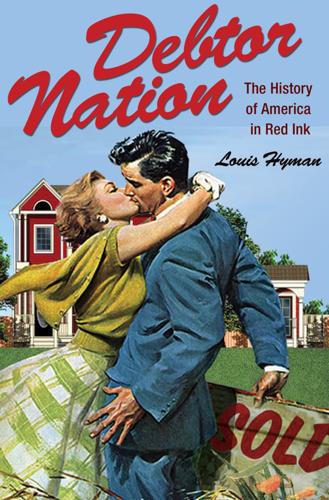
Debtor Nation: The History of America in Red Ink (Politics and Society in Modern America)
by
Louis Hyman
Published 3 Jan 2011
Unfortunately for credit card companies, fees, unlike interest rates, were still regulated by individual states, until 1996 that is. In 1996, a Supreme Court decision, Smiley v. Citibank, extended 274 CHAPTER SEVEN the Marquette decision to allow banks to charge late fees if the card was issued in a state that allowed such fees.250 Barbara Smiley, a California homemaker, had two credit cards through Citibank, in South Dakota.251 In 1992, she brought a class action lawsuit against Citibank on behalf of California borrowers charged $15 late fees, which she saw as illegal under California law. The Court upheld the position of the Comptroller of the Currency, that fees were simply another form of interest.
…
“A Desire to Shed Bad Debt Drives Portfolio Sales,” Credit Card News, February 1, 1997. 245. Ibid. 246. Anonymous, “Risk-based repricing draws flak,” CCM (January 1996), 13. 247. “A Desire to Shed.” 248. “Fraying Credit Quality Leaves Investors Hanging,” Credit Card News, July 1, 1996. 249. Ibid. 250. Linda Green, “Late Fees Upheld For Credit Cards,” New York Times, June 4, 1996, A1.; Barbara Smiley, Petitioner V. Citibank (South Dakota), N.A., 517 U.S. 735. 251. Paul Barrett, “Legal Beat: Justices’ Ruling on credit cards favors banks,” Wall Street Journal, June 4, 1996, B1; The Smiley decision followed on the heels of several state-level decisions like Tikkanen v.
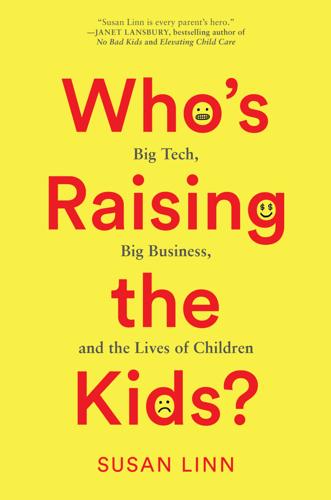
Who’s Raising the Kids?: Big Tech, Big Business, and the Lives of Children
by
Susan Linn
Published 12 Sep 2022
I’m taught that credit cards charge interest if I don’t pay off my balance each month.46 Here’s what I’m not taught: That the interest rates charged by credit card companies are often exorbitant—and that’s why they actually want me to pay only my minimum balance each month. That’s how these companies make money. That companies charge huge late fees if you miss, or are late with, a payment. That Discover usually charges $27 for a missed payment and that the late fees are added on to everaccruing interest from past purchases and that fees can increase with additional missed payments.47 Demoting myself from middle school to pre-K, I tackle Visa’s unit for the youngest grades. Given that it’s for kids between the ages of four and seven, I’m relieved that it doesn’t try to sell me on credit cards.

Think Like a Rocket Scientist: Simple Strategies You Can Use to Make Giant Leaps in Work and Life
by
Ozan Varol
Published 13 Apr 2020
What do you assume you’re supposed to do simply because everyone around you is doing it? Can you question this assumption and replace it with something better? We used to assume that a restaurant required tables, an immobile kitchen, and a brick-and-mortar location. Questioning these assumptions gave us food trucks. We used to assume that late fees and physical stores were necessary for video rentals. Questioning these assumptions gave us Netflix. We used to assume that you needed bank loans or venture-capital funding to launch a new product. Questioning these assumptions gave us Kickstarter and Indiegogo. To be sure, you can’t go through life questioning every single thing you do.
…
Steve Jobs famously borrowed from calligraphy to create multiple typefaces and proportionally spaced fonts on the Macintosh. Netflix cofounder Reed Hastings was inspired by the subscription model used at his gym: “You could pay $30 or $40 a month and work out as little or as much as you wanted.”71 Frustrated by the big late fees he had incurred for renting Apollo 13, Hastings decided to apply the same model to video rentals. Nike’s first running shoes were modeled after a common household appliance.72 In the early 1970s, University of Oregon running coach Bill Bowerman was looking for shoes that would perform well on different surfaces.
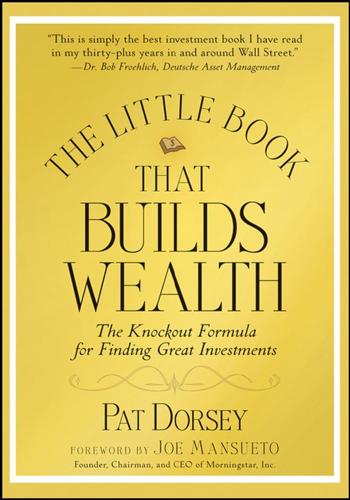
The Little Book That Builds Wealth: The Knockout Formula for Finding Great Investments
by
Pat Dorsey
Published 1 Mar 2008
Why don’t people switch banks frequently in search of higher interest rates and lower fees? People will drive a couple of miles out of their way to save a nickel per gallon on gasoline, after all, and that’s only a buck or two of savings per fill-up. A bank account that doesn’t nickel-and-dime you for late fees and such could easily save you a lot more than that cheap out-of-the-way gas station can. The answer is pretty simple, of course. Switching from the nearby gas station to the cheaper one costs you maybe 5 to 10 minutes extra of time. That’s it. Moreover, you know with certainty that is the only cost, because gasoline is gasoline.
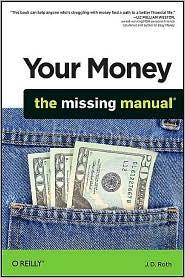
Your Money: The Missing Manual
by
J.D. Roth
Published 18 Mar 2010
(Flip to Your Credit Score for info on credit scores.) Wang says the key to profiting from credit cards is to pay your balance every month. He's been using credit cards for 11 years and has never paid a finance charge. He's never paid a late fee, either, though he's come close. "There have been times my payments were a couple days late, but every time I've been able to call and have them remove the late fee and the finance charges. Everything's been fine." For more on savvy use of credit cards, pick up a copy of How You Can Profit from Credit Cards (FT Press, 2008) by Curtis Arnold. Disputing Charges Mistakes happen.

The Black Box Society: The Secret Algorithms That Control Money and Information
by
Frank Pasquale
Published 17 Nov 2014
Such huge takes create inflated expectations throughout the economy the way inflated grade-curves do in schools; how can health reformers ask surgeons to accept lower salaries when their friends in fi nance are so 200 THE BLACK BOX SOCIETY much richer? The bankers’ bounty fuels a derangement of value and deteriorating values. Banks charge plenty for their vital ser vices. Consider that late fee on your credit card; even before you incurred it, the bank had already taken a cut of every purchase you made. Consider the mysterious charges eating away at your 401(k), and the transaction costs whenever your broker buys or sells. Fee churning contributes hugely to the livelihoods of finance professionals.
…
Programs follow steps in mathematicized procedures, and use complex pattern recognition techniques to analyze massive data sets. Scott Patterson, The Quants: How a New Breed of Math Whizzes Conquered Wall Street and Nearly Destroyed It (New York: Crown Business, 2011), 251. 5. Few people fully grasp the impact of credit scoring. You may think that the late fee for paying a credit card bill is merely $35 or so. But if it reduces your credit score, the price could be far steeper. For instance, consider someone who took out a $500,000, thirty-year fi xed-rate mortgage in 2010 with a credit score of about 765. At some point, he might accidentally miss a payment on a credit card, and his score might drop to, say, 690.
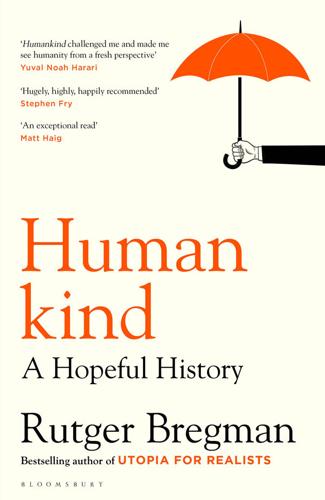
Humankind: A Hopeful History
by
Rutger Bregman
Published 1 Jun 2020
The result was fussy children and staff forced to work overtime. And so the organisation decided to impose a late fee: three dollars every time a parent showed up late. Sounds like a good plan, right? Now parents had not one but two incentives – both a moral and a financial one – to arrive on time. The new policy was announced, and the number of parents who arrived late … went up. Before long, one-third was arriving after closing time, and in a matter of weeks, 40 per cent. The reason was straightforward: parents interpreted the late fee not as a fine but as a surcharge, which now released them from their obligation to pick up their kids on time.11 Many other studies have since validated this finding.
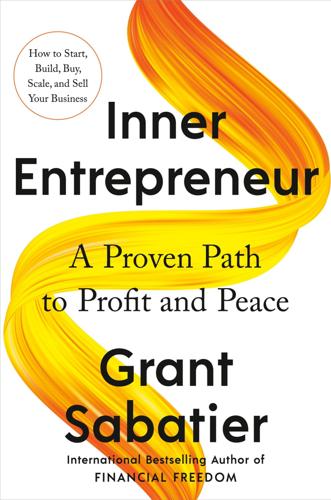
Inner Entrepreneur: A Proven Path to Profit and Peace
by
Grant Sabatier
Published 10 Mar 2025
Companies that have high free-cash-flow margins, above 20 to 25 percent, typically get higher valuations. You should track accounts payable regularly, usually weekly or biweekly, to stay on top of how much money you’re owed. The aging schedule is vital for assessing how timely you are with payments to avoid late fees or supplier disputes. Maintaining healthy relationships with your suppliers is crucial, since replacing them can be expensive and difficult. Remember that businesses are built on relationships, so you should keep your customers, employees, vendors, and suppliers happy. Here are other ways to improve your accounts payable: Negotiate favorable payment terms with your suppliers.
…
Extend payment terms with suppliers whenever feasible, as long as it aligns with your agreements and doesn’t harm your relationships. Invest in accounts payable automation tools and software to streamline invoice processing and payment approvals. Automation reduces manual errors, speeds up processes, and improves efficiency. Monitor and manage your payment schedule to avoid late fees. Set up an invoice approval process to ensure that invoices are reviewed and approved before payment. This reduces the risk of paying incorrect or fraudulent invoices. Cut Unnecessary Expenses The expenses by vendor report details how much money you’re paying vendors over a defined period.
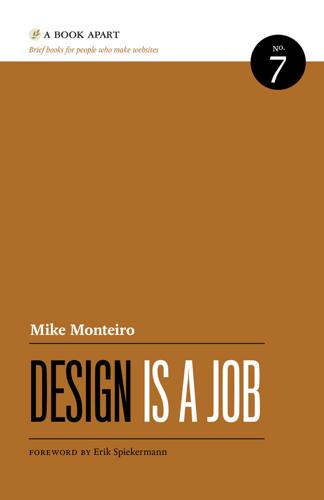
Design Is a Job
by
Mike Monteiro
Published 5 Mar 2012
The only exception is when we’re working with a large company or organization (read: schools and state) where trying to meet that requirement puts an undue burden on the client. In those situations we wait until the payment has been processed. And we don’t do that very often. Feel free to tack on a late fee for late payment. Make sure it’s high enough that you won’t be upset if a company takes you up on it, and have it grow incrementally over a period of time. Dealing with Late Payments Ninety percent of dealing with late payments is figuring out how to avoid late payments. So if you picked up the book and skipped right to this section because you’ve got an urgent problem, just hold on a sec.
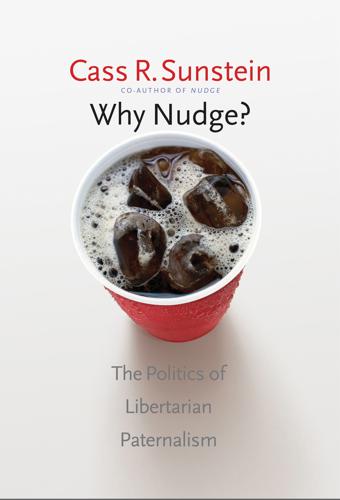
Why Nudge?: The Politics of Libertarian Paternalism
by
Cass R. Sunstein
Published 25 Mar 2014
If those attributes would matter to people who attended to them, then efforts to promote disclosure do not question people’s ends. Consider, for example, the multiple disclosure requirements in the 2009 Credit Card Accountability Responsibility and Disclosure (CARD) Act, which are designed to ensure that cardholders are not surprised by late fees and overuse fees. Small nudges, informing people of the costs of such fees in advance, have contributed to annual savings, as a result of the CARD Act, of more than $20 billion.12 Of course, it may be hard to determine whether people are in fact ignoring shrouded attributes, or whether they simply do not much care about them.
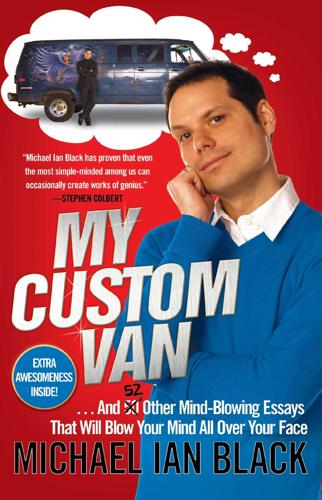
My Custom Van: And 50 Other Mind-Blowing Essays That Will Blow Your Mind All Over Your Face
by
Michael Ian Black
Published 14 Jul 2008
Sample lyric: “I’m gonna purchase two big Whoppers / Then chew them up with my choppers.” Round Robin seating arrangement. Free subscription to Carl’s bi-annual Babylon 5 zine, creatively entitled Babble On. Retail value: $11.00 Free 24/7 access to Randy’s DVD collection, which leans heavily toward sci-fi and Japanese erotic anime. (It’s a great benefit, but Randy’s late fees are a killer: a hundred dollars per day.) Annual Secret Santa gift exchange. Value of gifts not to exceed fifteen dollars. Best of all, the pride of obtaining membership in the area’s most exclusive club! If this sounds appealing, feel free to contact me, Head of the Membership Committee, at my mom’s house, where I am temporarily residing, or at my place of employment (the address of which I will give when I have a place of employment).
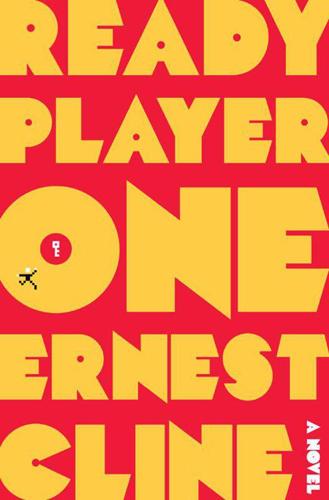
Ready Player One
by
Ernest Cline
Published 15 Feb 2011
Our records also show that you are currently unemployed and have therefore been classified as impecunious. Under current federal law, you are now eligible for mandatory indenturement. You will remain indentured until you have paid your debt to our company in full, along with all applicable interest, processing and late fees, and any other charges or penalties that you incur henceforth.” Wilson motioned toward the dropcops. “These gentlemen are here to assist me in apprehending you and escorting you to your new place of employment. We request that you open your door and grant us access to your residence. Please be aware that we are authorized to seize any personal belongings you have inside.
…
Once my debt was paid in full, I would be released from indenturement. At that time, based on my job performance, it was possible I would be offered a permanent position with IOI. This was a complete joke, of course. Indents were never able to pay off their debt and earn their release. Once they got finished slapping you with pay deductions, late fees, and interest penalties, you wound up owing them more each month, instead of less. Once you made the mistake of getting yourself indentured, you would probably remain indentured for life. A lot of people didn’t seem to mind this, though. They thought of it as job security. It also meant they weren’t going to starve or freeze to death in the street.

Operation Lighthouse: Reflections on Our Family's Devastating Story of Coercive Control and Domestic Homicide
by
Luke Hart
and
Ryan Hart
Published 15 Jul 2018
He was functioning perfectly well; nothing had changed in him. After all, he had managed to comfortably write a 12-page murder note explaining how justified he was to kill his family. On 18 July, four days after our mother moved out, our father returned a rental car he had been leasing, on time, to avoid the late fee. He cooked himself a meal he described as his ‘last supper’ and he’d even purchased a parking ticket on 19 July minutes before murdering our mother and sister. This wasn’t how we understood murder. There were no examples of a ‘loss of control’. In fact, there appeared to be an excess of control.

Designing for the Social Web
by
Joshua Porter
Published 18 May 2008
Assigns ownership to the viewer—“your list of movies” . Shows the progression of service—what steps happen in what order . Gives a clear indication of how long each step takes . Explains who does what (You: create list and return movies, We: send you movies) . Explains in user’s language why service is different/better (no late fees) 73 74 DESIGNING FOR THE SOCIAL WEB Now, I’ve worked on projects where a graphic like the Netflix graphic was voted down. Here is how the discussion went: Designer: I think a graphic showing how the service works would help to make it really clear for people who aren’t quite sure about signing up yet.

Taming the To-Do List: How to Choose Your Best Work Every Day
by
Glynnis Whitwer
Published 10 Aug 2015
But as I mentioned before, we are stewards of our story. Being proactive with our health makes a profound difference in our quality of life and our ability to live out our God-given potential. The High Cost of Procrastination There are so many other costs of procrastination. We can experience financial costs by accruing late fees, missing warranty deadlines, and failing to return unwanted items by the refund date. In our rush to finish projects, we can produce a lower quality of work and make more mistakes. Our relationships suffer when we delay dealing with issues or impose extra work on others because of our last-minute efforts.
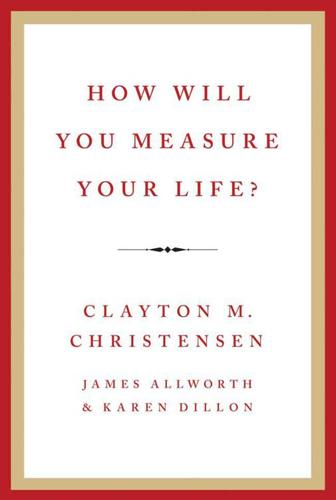
How Will You Measure Your Life?
by
Christensen, Clayton M.
,
Dillon, Karen
and
Allworth, James
Published 15 May 2012
To prod customers to return the DVDs quickly, the company levied big fines for every day that the customer forgot to return the DVD on time—if Blockbuster didn’t, it wouldn’t make money, because the DVD would be sitting in a customer’s home rather than be rented to someone else. It didn’t take long before Blockbuster realized that people didn’t like returning movies, so it increased late fees so much that analysts estimated that 70 percent of Blockbuster’s profits were from these fees. Set against this backdrop, a little upstart called Netflix emerged in the 1990s with a novel idea: rather than make people go to the video store, why don’t we mail DVDs to them? Netflix’s business model made profit in just the opposite way to Blockbuster’s.
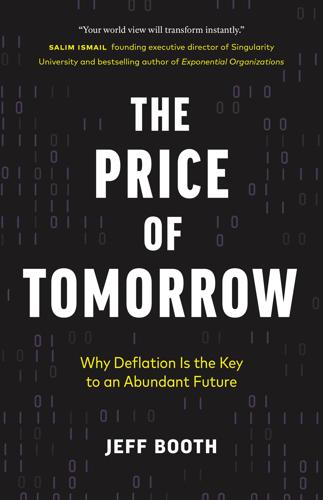
The Price of Tomorrow: Why Deflation Is the Key to an Abundant Future
by
Jeff Booth
Published 14 Jan 2020
It used the power of its scale to have more hits in stock and to negotiate with content producers. But Blockbuster didn’t see the rate of technology advancement and consequently failed to see a world where digital delivery was instantaneous and free (or almost free)—a world where consumers wouldn’t walk in its doors and plonk down two or three bucks to borrow a video and then pay late fees because they forgot to drive back to the store and return it on time. It seems easy to see now, but at the time that executives were making these decisions, download speeds made streaming impossible and Netflix relied on the physical delivery of DVDs. Unable to grasp how fast technology was moving, it was easy for them to be complacent.
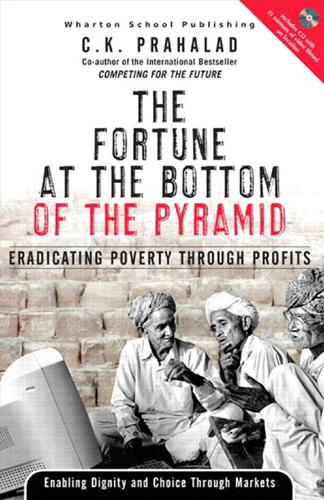
The fortune at the bottom of the pyramid
by
C. K. Prahalad
Published 15 Jan 2005
When a group of three socios walks into a cell and completes an application, the only commitment they are expected to make is the regular payment of 360 pesos per week per group on time. If for any reason one of the team members doesn’t turn in his or her payment portion on time, the group as a whole will pay a late fee of an additional 50 percent (60 pesos) per late socio. Not only is there a late-fee penalty, but the delivery for the entire group is delayed by one week as well. This also is recorded as a black mark, and the group members will have problems later if they decide to apply for a new credit. If one of the members defaults for some reason, news simply spreads by word of mouth and he or she is more or less ostracized from the whole process.
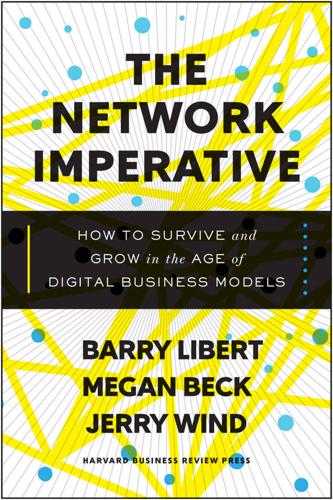
The Network Imperative: How to Survive and Grow in the Age of Digital Business Models
by
Barry Libert
and
Megan Beck
Published 6 Jun 2016
From the outside, Reed Hastings, Netflix’s CEO, observed that many of the video rental and movie industry’s core beliefs and supporting systems (physical stores and movie theaters with transactional revenue models) were failing to make customers happy. He questioned each and every one of them, inverted them, and brought them to market. On-demand home delivery of movies with no late fees was a revelation for the market; it constituted a major disruption. This new business model took down Blockbuster and has forced movie theaters to adapt and find new ways to lure customers off their sofas to the big screen. Today this story is familiar and can be seen in many industries. Uber’s CEO, Travis Kalanick, did the same thing when he created a ride-sharing service using mobile technologies to connect drivers and riders directly, where existing black car and taxi companies didn’t.
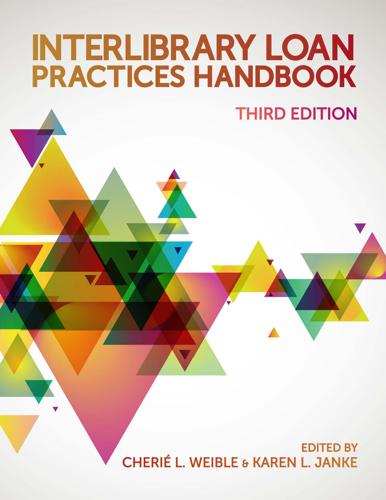
Interlibrary Loan Practices Handbook
by
Cherie L. Weible
and
Karen L. Janke
Published 15 Apr 2011
For libraries that use manual systems it may be important to note this number in association with any other information that the library retains about the request. overdue fees, damaged materials, and replacements Although most patrons who borrow materials respect and follow the rules and policies for borrowing, there will inevitably be items that are returned past the due date. Each borrowing library must formulate its position on overdue materials and decide whether a late fee should be charged to patrons for overdue interlibrary loan items. Some libraries take the position that fees are difficult to collect and manage. Other libraries find that having an overdue fee cuts down on those patrons who are lackadaisical about returning material in a timely manner. Another approach is to avoid overdue fines and to block the borrowing library’s patron after the material has become overdue.

Chasing Slow: Courage to Journey Off the Beaten Path
by
Erin Loechner
Published 10 Jan 2017
It is all too heavy, the rice and the missing and me, and I have forgotten everything else about that moment except for the tears and the phone and Ken’s voice saying that I don’t have to go to the doctor, but I do need to put on pants and shoes, and then we will talk about the doctor. * * * A FEW PLACES WHERE I HAVE HAD PANIC ATTACKS 001. At Bed, Bath and Beyond, comparing towel prices. 002. In the university library, after receiving a late fee for a transcription machine I could not remember ever borrowing. (I hadn’t; it was a mistake, and still, the panic attack.) 003. On my wedding day, after the soccer game. I didn’t have anything borrowed. I didn’t have anything blue. 004. In an airplane bathroom somewhere over Idaho, somewhere over the cloud carpet.
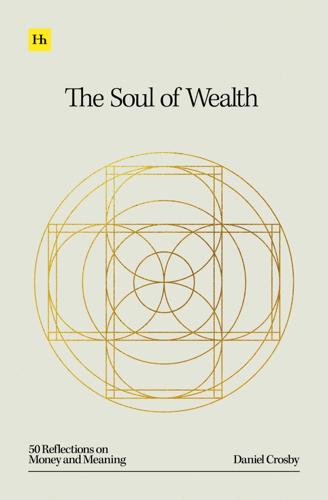
The Soul of Wealth
by
Daniel Crosby
Published 19 Sep 2024
Back in, say, 2005, Netflix was merely a DVD-by-mail service firm, but co-founder and CEO Reed Hastings envisioned a streaming future. Blockbuster, meanwhile, had convinced itself that people would continue to drive to the video rental store on a Friday night to then chill at home and maybe pay a late fee after forgetting to return the tape on time, or for not being kind and rewinding. Alas, Blockbuster’s fixation on physical locations and haphazard entry into the digital space resulted in its bankruptcy in 2010. In a twist of painful irony, Blockbuster had the chance to buy out Netflix for just $50 million, but its management team laughed Netflix co-founder Marc Randolph out of the room.31 The cost of hubris in that instance was about $200 billion (the current market cap of the streaming giant).
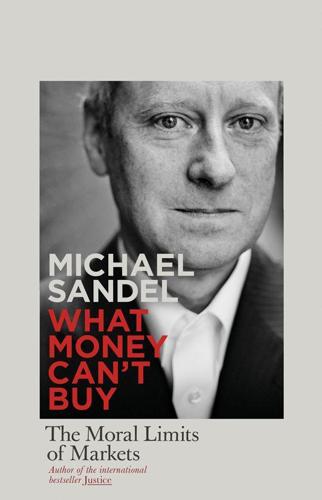
What Money Can't Buy: The Moral Limits of Markets
by
Michael Sandel
Published 26 Apr 2012
Although the fraudeurs are unlikely to prevail, their novel scheme converts a penalty for cheating into a monthly insurance premium, a price they are willing to pay to resist the system.40 To decide whether a fine or a fee is appropriate, we have to figure out the purpose of the social institution in question and the norms that should govern it. The answer will vary depending on whether we’re talking about showing up late at the day-care center, jumping the turnstile in the Paris subway, or … returning an overdue DVD to the local video store. In the early days of video stores, they treated late fees as fines. If I returned a video late, the person behind the counter had a certain attitude. It was as if I’d done something morally wrong, keeping the movie an extra three days. I thought this attitude was misplaced. A commercial video store is not a public library, after all. Libraries impose fines for overdue books, not fees.
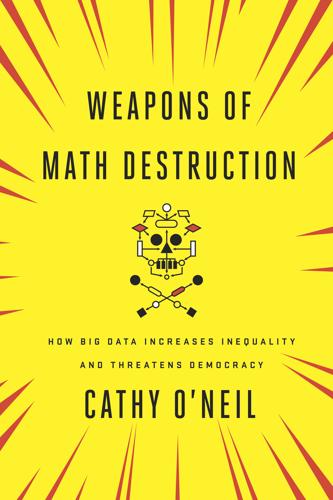
Weapons of Math Destruction: How Big Data Increases Inequality and Threatens Democracy
by
Cathy O'Neil
Published 5 Sep 2016
One of them, CreditScoreDating, proclaims that “good credit scores are sexy.” We can debate the wisdom of linking financial behavior to love. But at least the customers of CreditScoreDating know what they’re getting into and why. It’s up to them. But if you’re looking for a job, there’s an excellent chance that a missed credit card payment or late fees on student loans could be working against you. According to a survey by the Society for Human Resource Management, nearly half of America’s employers screen potential hires by looking at their credit reports. Some of them check the credit status of current employees as well, especially when they’re up for a promotion.
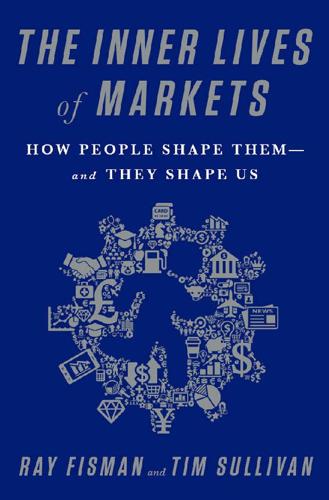
The Inner Lives of Markets: How People Shape Them—And They Shape Us
by
Tim Sullivan
Published 6 Jun 2016
The Fresno test seemed to be going well enough that Williams and his team expanded the program, using a similar approach in San Francisco, Sacramento, and Los Angeles. By October of 1959, the bank had mailed more than two million cards throughout California, and more than twenty thousand merchants had accepted the new BankAmericard. The bank, meanwhile, made its money by sitting in between those two sides of the market, charging its customers interest and late fees and taking a piece of every transaction from the merchants. For a while, the newly launched card appeared to be a great success, but there was a fatal flaw in the design of Williams’s platform. We’ve kind of given it away already: today, to get a credit card you need to apply for one, and before you actually get your card and line of credit, the issuer takes a look at your credit score, salary, and other predictors of whether you’ll ever pay off your balance.

Hillbilly Elegy: A Memoir of a Family and Culture in Crisis
by
J. D. Vance
Published 27 Jun 2016
If I wanted to take a girl out to dinner or needed a book for school and didn’t have money in the bank, I didn’t have many options. (I probably could have asked my aunt or uncle, but I desperately wanted to do things on my own.) One Friday morning I dropped off my rent check, knowing that if I waited another day, the fifty-dollar late fee would kick in. I didn’t have enough money to cover the check, but I’d get paid that day and would be able to deposit the money after work. However, after a long day at the senate, I forgot to grab my paycheck before I left. By the time I realized the mistake, I was already home, and the Statehouse staff had left for the weekend.
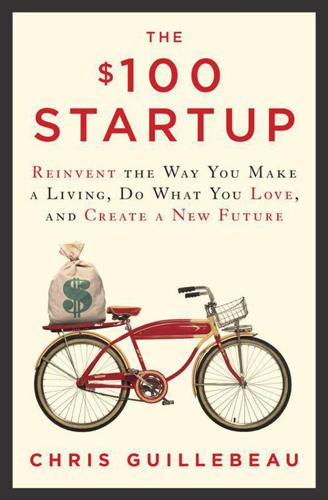
The $100 Startup: Reinvent the Way You Make a Living, Do What You Love, and Create a New Future
by
Chris Guillebeau
Published 7 May 2012
Patrick has kids and lives on the East Coast; Rich is childless and lives on the West Coast. ‡I was a customer of Copley Trash Services, and one week I neglected to pay my dues. A polite note was placed on my door: “Did you forget something?” I shamefully paid up and included an extra 50 cents in late fees. BECOME AS BIG AS YOU WANT TO BE (AND NO BIGGER). “Nothing will work unless you do.” —MAYA ANGELOU Among the people we’ve met in our story thus far, a few are active risk takers, charging ahead to storm the castle, career or finances be damned if they fail. But far more common are those who carefully take the time to build a business step by step.
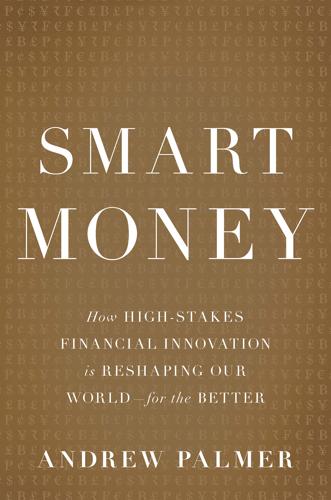
Smart Money: How High-Stakes Financial Innovation Is Reshaping Our WorldÑFor the Better
by
Andrew Palmer
Published 13 Apr 2015
That is partly because there are more people in financial difficulty and partly because of the stigma associated with serving the subprime segment of the market. But it is also because of the harsher regulatory climate for financial institutions. In the United States the 2009 Credit Card Accountability, Responsibility, and Disclosure (Credit CARD) Act reduced interest-rate increases and late fees on credit cards. The Consumer Financial Protection Bureau is looking at overdraft fees and the prepaid-cards market. The Durbin Amendment—passed as part of the Dodd-Frank Act in July 2010—capped interchange fees, the commission that merchants pay, on debit cards. Add in persistently low interest rates, which have eaten into banks’ net interest margins, and Oliver Wyman, a consultancy, has estimated that US banks lose money on 37 percent of consumer accounts.
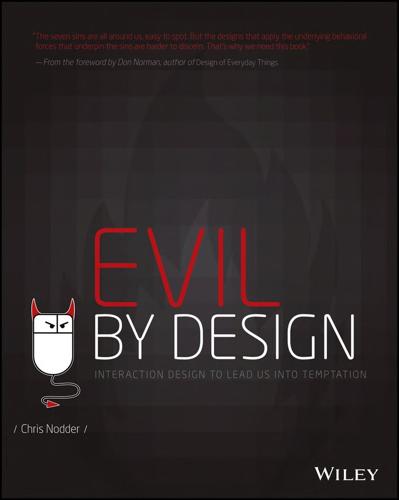
Evil by Design: Interaction Design to Lead Us Into Temptation
by
Chris Nodder
Published 4 Jun 2013
Dan Ariely, in his book Predictably Irrational, shows how providing the offer of payment (even in the sense of a fine) counterintuitively legitimizes an otherwise punishable activity, allowing people to feel OK about doing it because they paid for it. Ariely’s example is parents who were happy to pay a late fee for leaving their kids in daycare too long. It would be interesting to see whether GymPact has users who behave the same way, seeing payment as an alternative to achievement or even as a way of justifying not achieving. How to encourage payment instead of achievement If your game or product revolves around escalating levels of achievement, it’s likely that people with more money than time will want to pay for a shortcut.
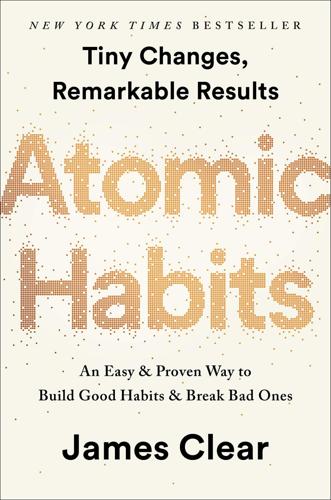
Atomic Habits: An Easy & Proven Way to Build Good Habits & Break Bad Ones
by
James Clear
Published 15 Oct 2018
The best way I know to overcome this predicament is to increase the speed of the punishment associated with the behavior. There can’t be a gap between the action and the consequences. As soon as actions incur an immediate consequence, behavior begins to change. Customers pay their bills on time when they are charged a late fee. Students show up to class when their grade is linked to attendance. We’ll jump through a lot of hoops to avoid a little bit of immediate pain. There is, of course, a limit to this. If you’re going to rely on punishment to change behavior, then the strength of the punishment must match the relative strength of the behavior it is trying to correct.

The Simple Living Guide
by
Janet Luhrs
Published 1 Apr 2014
“I read somewhere about the concept of pay yourself first,” she says, “and I practiced it. There were times when I’d even delay paying some significant doctor or electric bill just so I’d put my $50 away first. I’d wait until the next month to pay the other bill, even though I’d be charged a late fee. The late fees served as a reminder to me that I was living above my means.” Barbara’s net worth at age 26 was about $2,000. She used that money as a down payment to purchase her first house. At age 28, Barbara married Ron Bryan, a real-estate agent. Together they realized that they could be financially independent through owning and renting property.
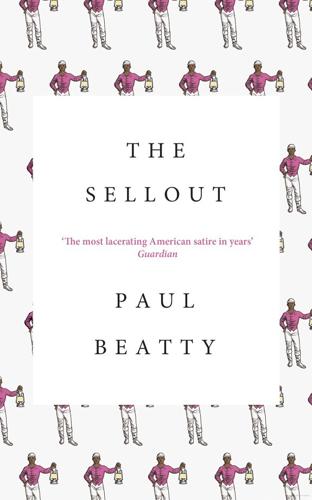
The Sellout: A Novel
by
Paul Beatty
Published 2 Mar 2016
How it wasn’t the Keynesian lapdogs so beloved by the banks and the media who predicted the most recent financial meltdown but the behavioral economists who knew that the market isn’t swayed by interest rates and fluctuations in GDP, rather by greed, fear, and fiscal illusion. The discussion grew animated. Their mouths stuffed with pastries, their lips flaked with coconut shavings, the Dum Dum Donuts patrons decried low-interest checking and the nerve of the goddamn cable company to charge late fees for not promptly paying ahead of time in July for services not rendered until August. One woman, her jowls filled to near bursting with macaroons, asked my father, “How much the Chinos make?” “Well, Asian men earn more than any other demographic.” “Even the faggots?” shouted the assistant manager.
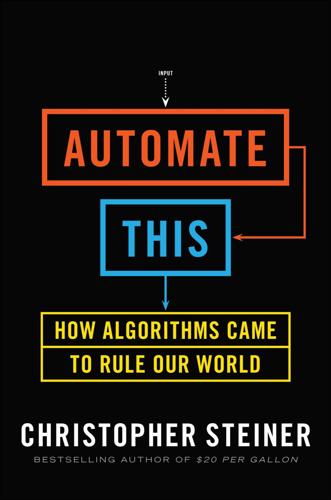
Automate This: How Algorithms Came to Rule Our World
by
Christopher Steiner
Published 29 Aug 2012
Also luckily for me, Northwestern gives alumni full access to its stacks and resources, affording me a vast and quiet workshop that was open early, late, and at all hours in between. When putting together the chapter on the history of algorithms, I found myself seeking old texts, often out of print and hard to find. Again, Northwestern had all of these materials, and I was able to browse them at will. The librarians there even waived some hefty late fees I had accrued on several books. Thank you. I started this book and wrote much of it as a staff writer at Forbes magazine. By the time I finished, however, I had left Forbes to form a startup, Aisle50, which offers grocery discounts to consumers. It was quite a change for me but also one that I embraced.
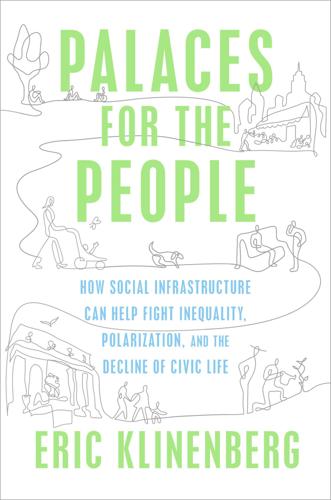
Palaces for the People: How Social Infrastructure Can Help Fight Inequality, Polarization, and the Decline of Civic Life
by
Eric Klinenberg
Published 10 Sep 2018
In 2016, the city renovated several branch libraries and the main library as well, adding a wall of windows that looks over its seven-acre Topiary Park, building new children’s rooms, improving the restroom facilities, and creating better connections between the library and the park. That year, as prosperous cities like San Jose cracked down on users with late fees, Columbus took the opposite approach. As of January 1, 2017, the metropolitan library stopped issuing fines for overdue books. “Removing barriers to get more materials into the hands of more customers brings us closer to achieving our vision of a thriving community where wisdom prevails,” said Patrick Losinski, the library system’s CEO.

AIQ: How People and Machines Are Smarter Together
by
Nick Polson
and
James Scott
Published 14 May 2018
You’ll come away with a higher AIQ and a new appreciation for just how brilliant human beings can be when they put their minds and their technology together. 1 THE REFUGEE On personalization: how a Hungarian émigré used conditional probability to protect airplanes from enemy fire in World War II, and how today’s tech firms are using the same math to make personalized suggestions for films, music, news stories—even cancer drugs. NETFLIX HAS COME so far, so fast, that it’s hard to remember that it started out as a “machine learning by mail” company. As recently as 2010, the company’s core business involved filling red envelopes with DVDs that would incur “no late fees, ever!” Each envelope would come back a few days after it had been sent out, along with the subscriber’s rating of the film on a 1-to-5 scale. As that ratings data accumulated, Netflix’s algorithms would look for patterns, and over time, subscribers would get better film recommendations. (This kind of AI is usually called a “recommender system”; we also like the term “suggestion engine.”)
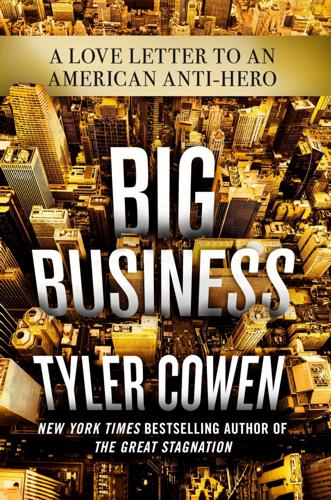
Big Business: A Love Letter to an American Anti-Hero
by
Tyler Cowen
Published 8 Apr 2019
It also eases record keeping because you can keep track of your finances without having to save, organize, and store all that paper. As part of those advances, taxes can be filed online and tax refunds obtained more quickly, and if need be your tax procrastination can run until the very last moment without your having to pay a late fee or penalty. More recently, Bitcoin has created an entirely new kind of asset, based on principles that only a decade ago very few people had imagined. It competes with gold as a hedge and unorthodox store of value, and you can use it as a currency to buy (legal) marijuana, a transaction that, because of federal regulations, the regular banking system cannot support.
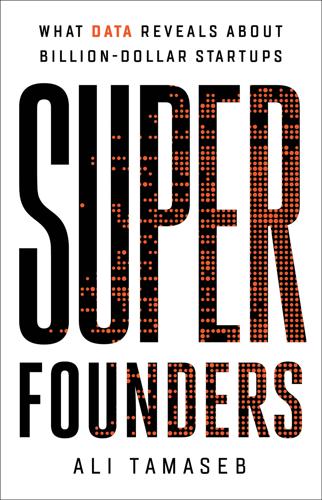
Super Founders: What Data Reveals About Billion-Dollar Startups
by
Ali Tamaseb
Published 14 Sep 2021
They’re essentially saying, “We’re not going to use credit cards. We’re not really going to be in debt. I’ve seen what debt did to my parents in 2008, and I don’t want to be any part of it.” We built what I thought would be the best product for the customer. It was simple interest instead of compounding interest. It had no late fees. It had no compounding of any kind, and the important part about it is that it would be communicated in dollars rather than percent. So it’s a $500 loan and $12 of interest. Fast-forward to today: we have many, many millions of users and billions of dollars of volume. It’s clearly a thing. And we have the metric of merchants saying it significantly increases their sales.
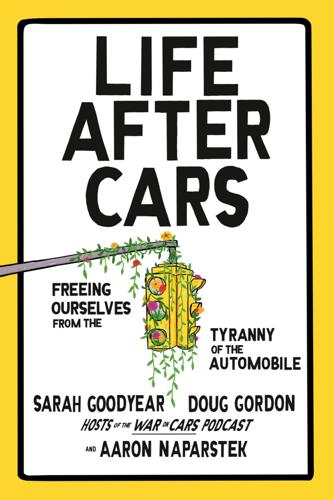
Life After Cars: Freeing Ourselves From the Tyranny of the Automobile
by
Sarah Goodyear
,
Doug Gordon
and
Aaron Naparstek
Published 21 Oct 2025
This is why we, and many other advocates, call for automated camera enforcement of moving violations like speed limits and red-light running (as well as passive controls on reckless driving, such as speed governors). Cameras don’t discriminate. Too often, cops do. “That’s where the police get the minority citizens,” Seo told us. “They get them for minor traffic violations and rack up their fines. And so the problems with…unequal justice, and poor people not being able to pay their fines, and late fees and fees for not appearing in court—all of that begins with traffic violations.” Each one of those traffic stops also comes with tremendous risk. The year Sandra Bland died, according to a survey cited by Seo, 27 percent of police killings of unarmed people resulted from the same type of inciting incident—a traffic stop.
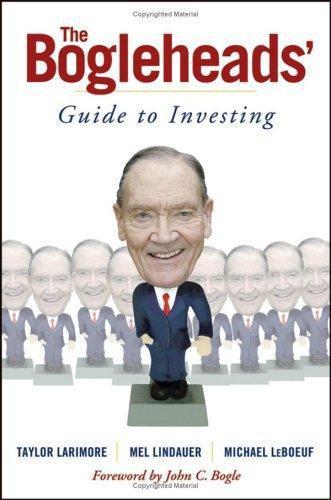
The Bogleheads' Guide to Investing
by
Taylor Larimore
,
Michael Leboeuf
and
Mel Lindauer
Published 1 Jan 2006
Be late with a payment on your mortgage, another credit card, or any other debt, and they reserve the right to raise your interest rate to any level that they choose. You have no say in the matter, and there is no federal limit on the interest rate a credit card company can charge. Similarly, there is no federal limit on how much credit card companies can charge you for late fees. By agreeing to their terms, you risk placing your financial future in the hands of companies with the power to become legalized loan sharks. Do you realize that over the course of a lifetime, your total income will likely be in the millions of dollars? Well, the banks and credit card companies sure do, and they want a piece of it.
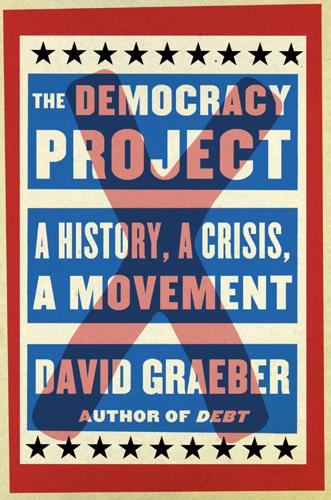
The Democracy Project: A History, a Crisis, a Movement
by
David Graeber
Published 13 Aug 2012
I remember I once allowed a Macy’s clerk to talk me into acquiring a Macy’s charge card, in order to buy a 120 pair of Ray-Ban sunglasses. I sent in a check to pay the charge before leaving the country for an extended trip, but apparently miscalculated by some 2.75 when figuring the tax; when I returned a few months later, I discovered I had accrued something like 500 in late fees. We’re not in the habit of calculating such numbers because they are, even more than debts, seen as the wages of sin: you only pay them because you did something wrong (in my case, miscalculate a math sum and neglect to have the bills forwarded to my overseas address). In fact, the entire system is now geared toward ensuring we make such mistakes, since the entire system of corporate profits depends on them.
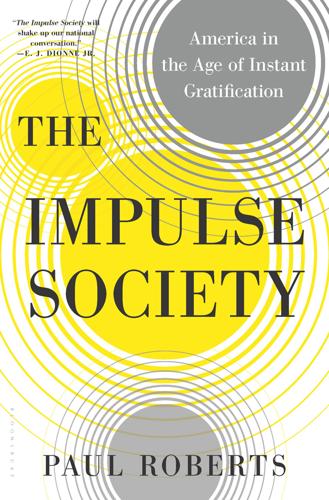
The Impulse Society: America in the Age of Instant Gratification
by
Paul Roberts
Published 1 Sep 2014
And while such a strategy might have been remotely logical in the days of stingy credit, when it was a safe bet that a lender had actually scrutinized our ability to repay a debt, that logic vanished with the rise of a banking model geared for high volumes and quick returns. By 1990s, bankers were carefully targeting consumers with the worst credit histories, since these people could be counted on to generate steady streams of late fees. What’s more, they were exploiting every one of our neurological glitches—raising credit limits and reducing minimum payments, for example, because these were shown to give consumers a false sense of wealth. For the financial sector, our faulty wiring would now be a critical source of profit. As Elizabeth Warren, then a Harvard law professor, noted in a scathing 1989 report, bank card companies “were willing to give out the fourth, sixth, or seventh bank card and to approve charges after debtors already showed short-term debt so large that they could not possibly pay the interest, much less the principal.”
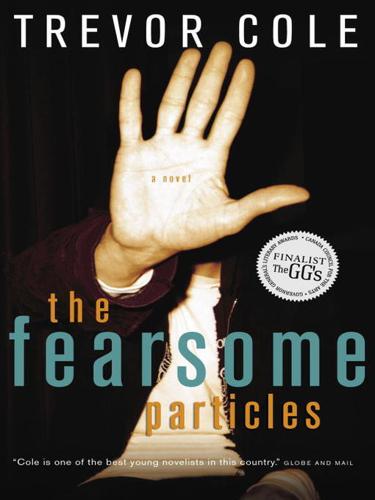
Fearsome Particles
by
Trevor Cole
Published 2 Jan 2006
Because it was free of all the tensions and issues I took for granted at home. Things like the way Mom and Dad edged around each other all the time as if there was something they wanted to say but couldn’t quite bring themselves to say it. Things like the worried way they smiled, as if whatever happiness they felt was loaner happiness that was already piling up late fees. Things like – this was a big one – nervous expectation. I mean, you can take that in small doses. But at my house on Breere Crescent, the walls practically ran with it. Here’s one example: yogurt. Mom, whenever she was working on a house, always woke up really early. And every morning, before she left, she’d set out breakfast items for me to eat – a fruit, a grain, and always a dairy in the fridge, which was usually yogurt.

How Music Got Free: The End of an Industry, the Turn of the Century, and the Patient Zero of Piracy
by
Stephen Witt
Published 15 Jun 2015
And if you wanted something more obscure—say, some art house flick that wasn’t in his immediate inventory—he could usually fill your request overnight. The value proposition for his customers was irresistible. Business flourished as Glover undercut the legitimate competition on price and product selection, offering outright ownership with no late fees. He reached a cartel-like agreement with Dockery to serve separate market segments, and by early 2002 Glover was selling 200 to 300 DVDs a week, frequently grossing over a thousand bucks in cash. He bought a second PC and another burner just to keep up with demand. Although he knew what he was doing was illegal, Glover felt he had insulated himself from suspicion.

I, Partridge: We Need to Talk About Alan
by
Steve Coogan
Published 1 Sep 2011
In the end there weren’t that many left for friends and family, but I figured Denise and Fernando wouldn’t mind sharing one, on the basis that they were siblings. And on the basis that we were now divorced, I decided my wife Carol could buy her own. Or, worst-case scenario, rent it from the library. (As I wouldn’t be receiving a new royalty every time a copy was taken out, I suggested to Norwich City Council that I get a cut of any late fees instead. They didn’t go for it.) One thing that did thrill me, though, and I knew it would thrill the reviewers, was that I had managed to stretch it to over 300 pages. It had a real meatiness to it. I banged it down on the kitchen table so I could enjoy its undeniable thud factor. ‘Thud,’ it went.

Frugal Innovation: How to Do Better With Less
by
Jaideep Prabhu Navi Radjou
Published 15 Feb 2015
Or take Plastyc, a start-up that claims to put the “power of a bank in your cell phone” by providing affordable 24-hour access to FDIC-insured virtual bank accounts that can be accessed from any internet-enabled computer or mobile device. These accounts are tied to prepaid Visa cards; consumers cannot go overdrawn and they incur no late fees. Plastyc’s low-fee, no-frills, online banking services are appealing to the nearly 70 million underbanked, or unbanked, Americans who cannot afford to pay large bank fees. And in the sharing economy, firms such as Airbnb (sharing homes), RelayRides (sharing cars) and ParkatmyHouse (sharing parking spaces) are taking advantage of the internet and social media to enable ordinary people to monetise their idle household assets.

What Algorithms Want: Imagination in the Age of Computing
by
Ed Finn
Published 10 Mar 2017
It was an approach entirely in keeping with the company’s reputation as an early darling of the disruptors: a Silicon Valley firm that was successfully upending a staid economic model. Over the first decade of its existence the company had taken a thoroughly saturated market—home movie rentals—and revolutionized it by creating a set of incremental advantages over its competitors. These perks were deeply appealing to consumers. Instead of paying expensive late fees to their local retail store, Netflix allowed customers to hang onto their copy of Titanic as long as they pleased for a fixed monthly subscription price. Rather than choose from a few thousand titles at their corner store, they could select from tens of thousands in Netflix’s vast library. And because the transactions were conducted by mail, customers no longer had to run a special errand, confront long lines and opinionated staff, or deal with the poor selection at their video store.
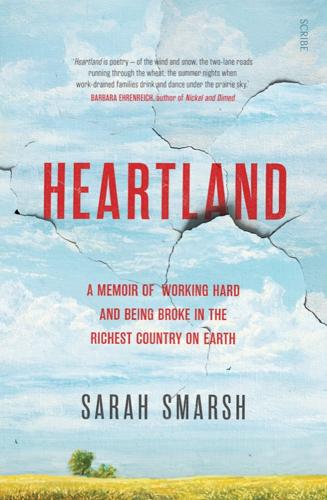
Heartland: A Memoir of Working Hard and Being Broke in the Richest Country on Earth
by
Sarah Smarsh
Published 17 Sep 2018
The same law limited the amount recipients could access as cash; regardless of their total monthly allotment, they could take out only $25 at a time via an ATM. It was a needless measure that benefited private banks contracting with the state, since every card swipe racked up a fee. Where once poverty was merely shamed, over the course of my life it was increasingly monetized to benefit the rich—interest, late fees, and court fines siphoned from the financially destitute into big bank coffers. Meanwhile, Americans in the late twentieth century clung to the economic promise that reward would find those who worked hard. Society told us that someone in a bad financial situation must be a bad person—lazy, maybe, or lacking good judgment.

My Friend Anna: The True Story of a Fake Heiress
by
Rachel Deloache Williams
Published 15 Jul 2019
On the night of July 17—the day I first called a lawyer—I had received an email from Janine. She had been keeping tabs on me since our post-Marrakech dinner, back in early June. Like Kathryn, she generously offered to extend a loan. Dave encouraged me to take it. Navigating this situation would be hard enough without the burden of worsening financial strain, hefty late fees, and damage to my credit, he argued. I needed to plug the hole. Next, I would send Anna a “friendly note” detailing the repayment terms. I hoped that since it was coming from me, and not from a lawyer, she’d sign it without objection. Regardless of whether or not she signed it, however, I would proceed with one of two options.
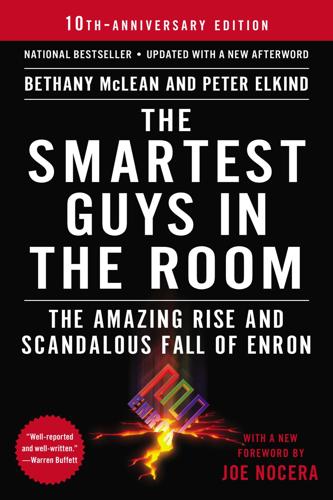
The Smartest Guys in the Room
by
Bethany McLean
Published 25 Nov 2013
The one constant in dealing with Enron, he says: “People we worked with were always making promises that weren’t kept.” Enron also had a contract with the giant HMO Kaiser Permanente to handle utility bills for hundreds of facilities in several states. But EES habitually paid the wrong amounts and ran up late fees as well. At one point, while Enron tried to straighten the mess out, boxes of unpaid Kaiser bills stacked up in EES’s offices. EES’s cash management was so poor that it took months to invoice customers for reimbursement of utility bills it had already paid. “We were basically paying their utility bills and giving them loans,” says an Enron managing director who studied the situation.
…
The management disarray was so bad that Skilling later received an e-mail from an Enron employee whose sister managed new buildings in Texas for J. P. Morgan Chase, an EES client. The bank was building a call center in San Antonio, and the city’s electric utility, she noted, “wants to charge us a $50,000 deposit for new power because 11 out of the last 12 payments made by Enron have been late, and late fees have been paid. . . .” Curry, meanwhile, kept discovering more land mines—and kept bringing them to Buy’s attention. In January 2001, Buy e-mailed her, Whalley, and other executives to voice his dismay. Subject: “Another $40 million”: I go away for a day and come back to yet another $40 million of PGE exposure.

Nudge: Improving Decisions About Health, Wealth, and Happiness
by
Richard H. Thaler
and
Cass R. Sunstein
Published 7 Apr 2008
Because interest on credit cards is not deductible, there is no particular reason for users to check how much they paid in interest last year on all their credit cards, and fees are likely to be buried and ignored altogether. Imagine the wakeup call for a credit card user who is told that over the past year he paid $2,153 in interest, $247 in late fees, and $57 in currency transaction fees. Some other nudges could help as well. For example, credit cards always mention the minimum payment you can make when you receive your monthly bill. This can serve as an anchor, and as a nudge that this minimum payment is an appropriate amount.* Of course, because the minimum payments are tiny relative to the total bill, paying this amount just maximizes the interest payments over time.
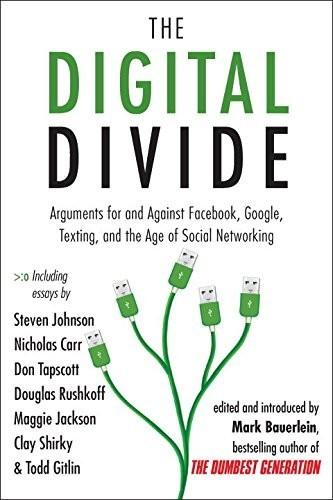
The Digital Divide: Arguments for and Against Facebook, Google, Texting, and the Age of Social Netwo Rking
by
Mark Bauerlein
Published 7 Sep 2011
Net Geners don’t like to be misled or hit with costly surprises, whether measured in money, time, quality, or function. Seventy-seven percent agreed with the statement “If a company makes untrue promises in their advertising, I’ll tell my friends not to buy their products.”17 They get angry when they feel they were wronged: “Blockbuster says no late fees. It is all a lie!” said one fifteen-year-old boy. “After a week you have to pay $1.25 and then you have to buy the movie after two weeks. They trick you!” Although Net Geners are quick to condemn, they are also quick to forgive if they see signs that the company is truly sorry for an error. Seventy-one percent said they would continue to do business with a company if it corrected a mistake honestly and quickly.18 Integrity, to the Net Gener, primarily means telling the truth and living up to your commitments.
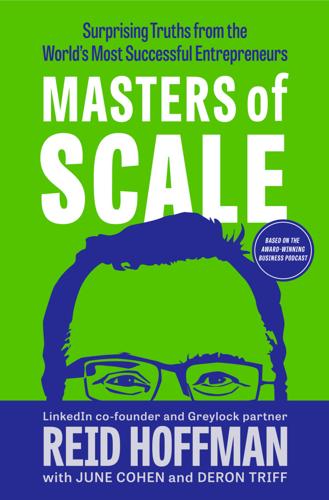
Masters of Scale: Surprising Truths From the World's Most Successful Entrepreneurs
by
Reid Hoffman
,
June Cohen
and
Deron Triff
Published 14 Oct 2021
If you foolproof your culture, you’ll have a culture of fools It’s easy to forget just how radically Netflix upended the video rental business. Reed co-founded and seed-funded Netflix in 1997, using some of the money he earned when Pure Software was acquired for $750 million that year. The premise was elegantly simple: DVDs by mail. No late fees. No return shipping charges. No getting in your car to drive to the store. Lose a DVD? You get a new one in the mail, no questions asked. Blockbuster tried to follow suit, matching service for service, but they didn’t move quickly enough, and they filed for bankruptcy in 2010. But even as Reed’s audacious startup was upending how movie rentals had worked in the past, he kept an eye fixed on the future.
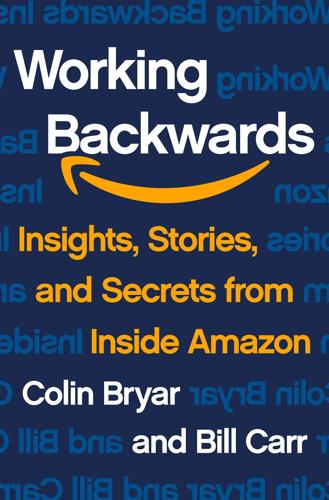
Working Backwards: Insights, Stories, and Secrets From Inside Amazon
by
Colin Bryar
and
Bill Carr
Published 9 Feb 2021
They’d leave work and schlep to their local Blockbuster store in hopes of finding a good movie to watch that evening. The good titles and the latest releases were always gone, so they’d settle for something the whole family could at least tolerate. Often, they returned the title late and had to pay dreaded late fees that could double or triple the cost of a rental. We thought Unbox could change all that. Let me explain how our service worked, or, I should say, sort of worked. First, you would go to the Amazon website to get the Amazon Unbox application, download it, and install it on your PC. I say PC because if you were a Mac user, you were out of luck—Unbox only ran on Windows machines, and only on Windows machines less than three years old.
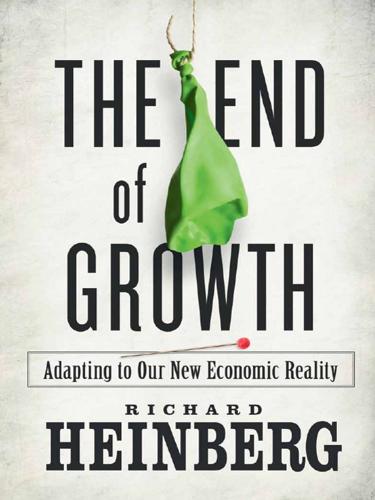
The End of Growth: Adapting to Our New Economic Reality
by
Richard Heinberg
Published 1 Jun 2011
In thousands of documented cases foreclosures were conducted even though the borrower was not notified in advance, or the borrower was told by the bank to withhold payments in order to qualify for a mortgage modification but then declared in default by the bank, or the bank added thousands of dollars of “late fees” to the borrower’s account, forcing the borrower into default. In a landmark ruling in January 2011, the Massachusetts Supreme Court held that two banks foreclosed wrongly on two homeowners using suspect paperwork. Attorneys General in 50 states are investigating banks’ foreclosure processes. Many observers are questioning whether the banks actually technically own hundreds of billions of dollars’ worth of securitized mortgage assets on their balance sheets.
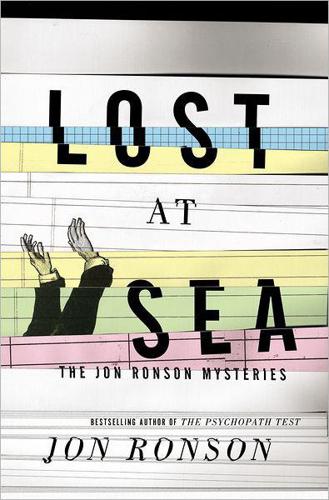
Lost at Sea
by
Jon Ronson
Published 1 Oct 2012
There’s a Jiffy bag, too, filled with sliced-up credit cards, cut in half when Richard Cullen finally admitted the problem to his wife. MBNA, Goldfish, Tesco, Amex, Frizzell, etc., all sliced up. A typical page of a Richard Cullen credit-card statement reads like this: Alliance and Leicester Interest charged: £71.07 Late fee: £25 Overlimit fee: £25 There are thousands and thousands of pounds’ worth of these £25s. Then there are letters, too, like this from Barclaycard: According to our records your Barclaycard history has been excellent and we have consequently enrolled you in our Guaranteed Acceptance Masterloan Programme.
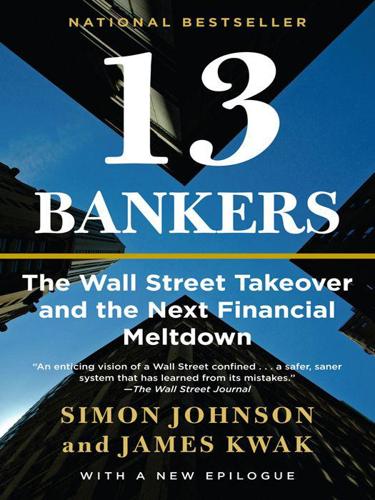
13 Bankers: The Wall Street Takeover and the Next Financial Meltdown
by
Simon Johnson
and
James Kwak
Published 29 Mar 2010
The key questions for any financial innovation are whether it increases financial intermediation and whether that is a good thing. Much recent “innovation” in credit cards, for example, has simply made the pricing of credit more complex. Card issuers have lowered the “headline” price that they advertise to consumers while increasing the hidden prices that consumers are less aware of, such as late fees and penalty rates. These tactics have increased the profits of credit card issuers, but have not increased financial intermediation—except insofar as they helped consumers underestimate the cost of credit and therefore borrow excessive amounts of money.56 Innovation that increases the availability of credit can also be harmful.

Remix: Making Art and Commerce Thrive in the Hybrid Economy
by
Lawrence Lessig
Published 2 Jan 2009
Customers paid Netflix a flat monthly fee; in exchange, they could rent DVDs of favorite films; those DVDs were sent through the mail, with simple return envelopes included; the monthly subscription entitled the customer to hold a fixed number of DVDs. Thus, if you had a three-DVD subscription, you paid about $17 a month. You ordered three movies that you wanted to see, and Netflix sent them. You could hold on to these movies for as long as you wanted (hence, no late fees). And when you returned one, the next on your queue was sent. The only inconvenience of this system was that you had to plan ahead a bit. The great advantage was that if you planned a bit in advance, the films would be waiting at home whenever you wanted to watch them. Netflix has radically changed the video rental market.
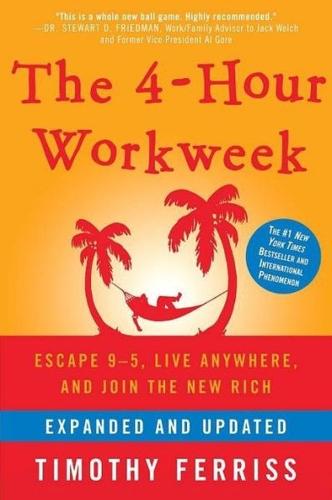
The 4-Hour Workweek: Escape 9-5, Live Anywhere, and Join the New Rich
by
Timothy Ferriss
Published 1 Jan 2007
Do not work more to fix overwhelmingness—prioritize. If you don’t prioritize, everything seems urgent and important. If you define the single most important task for each day, almost nothing seems urgent or important. Oftentimes, it’s just a matter of letting little bad things happen (return a phone call late and apologize, pay a small late fee, lose an unreasonable customer, etc.) to get the big important things done. The answer to overwhelmingness is not spinning more plates—or doing more—it’s defining the few things that can really fundamentally change your business and life. 8. Do not carry a cell phone or Crackberry 24/7. Take at least one day off of digital leashes per week.
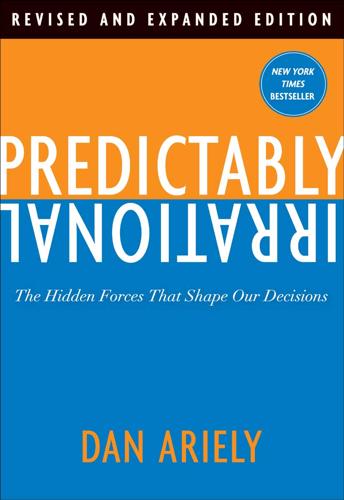
Predictably Irrational, Revised and Expanded Edition: The Hidden Forces That Shape Our Decisions
by
Dan Ariely
Published 19 Feb 2007
But here’s what I find strange: although companies have poured billions of dollars into marketing and advertising to create social relationships—or at least an impression of social relationships—they don’t seem to understand the nature of a social relationship, and in particular its risks. For example, what happens when a customer’s check bounces? If the relationship is based on market norms, the bank charges a fee, and the customer shakes it off. Business is business. While the fee is annoying, it’s nonetheless acceptable. In a social relationship, however, a hefty late fee—rather than a friendly call from the manager or an automatic fee waiver—is not only a relationship-killer; it’s a stab in the back. Consumers will take personal offense. They’ll leave the bank angry and spend hours complaining to their friends about this awful bank. After all, this was a relationship framed as a social exchange.

Risk: A User's Guide
by
Stanley McChrystal
and
Anna Butrico
Published 4 Oct 2021
Blockbuster, the video rental giant, was the movie store you loved to hate. Though it boasted a wide range of titles, its service didn’t rate even one Michelin star, and it typically smelled strongly of buttery popcorn. Customers, already frustrated when they couldn’t find the movie they wanted, became even more irritated by late fees, which were a dominant part of Blockbuster’s revenue. Profiting off human forgetfulness miffed so much of its customer base that the movie giant had “managed dissatisfaction” within its business model. Blockbuster stores always smelled like popcorn, but there were plenty of movies for you and your family to watch and enjoy.

Filterworld: How Algorithms Flattened Culture
by
Kyle Chayka
Published 15 Jan 2024
Natascha Folens, one such consultant, told me in 2016 that owners should embrace “the industrial look and the mid-century.” “As long as it doesn’t look cluttered and old,” she added. When I scroll backward through the history of my decade-old profile on Airbnb, I see grids of similarly spare, white-walled spaces: the hilltop Lisbon apartment where Jess and I had to pay a late fee to get in; the Seville courtyard with dramatic wooden shutters; the woodland glass box in upstate New York owned by a model-turned-restaurateur; the sterile lofted studio in Tokyo contained in its own tiny building even in the midst of the dense city; the immaculate Parisian apartment near Montmartre with its perfect collection of art books.
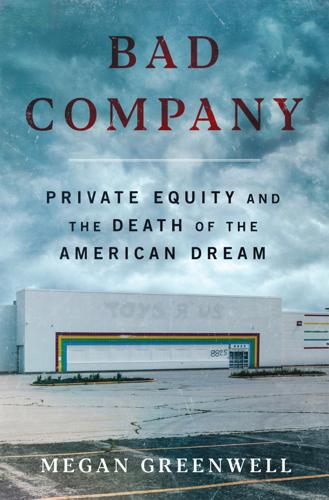
Bad Company
by
Megan Greenwell
Published 18 Apr 2025
When he talked to his neighbors and realized that many of them were also unable to pay rent, he took the lead, organizing a petition that demanded rent cancellation for all 2,346 apartments at Southern Towers, as well as strengthened health and safety measures. Bell Partners’ only response was a statement about how they would work with tenants to establish payment plans and waive some late fees. But Bourma and his neighbors didn’t have the money for partial payments either; they had been living paycheck to paycheck before Covid struck, and now they were running out of money entirely. So instead of accepting the offer, they persuaded three hundred tenants to sign on to a rent strike, staging protests in the complex’s parking lot.
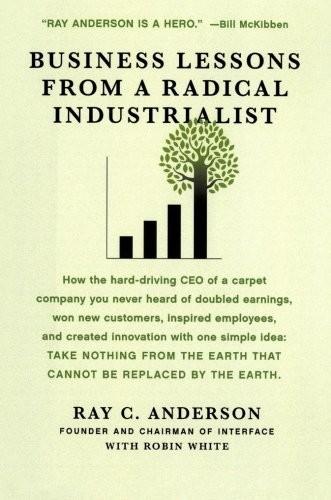
Business Lessons From a Radical Industrialist
by
Ray C. Anderson
Published 28 Mar 2011
Here’s an example: I read the other day about a woman who went to the mall for some “retail therapy” and used her credit card to buy a pair of shoes. They cost about forty dollars—a bargain. But at the end of the month, after paying her mortgage, her health insurance, her food, gasoline, and utilities, she didn’t have enough to go around. A few months later, her credit card company notified her that those forty-dollar shoes, with all the late fees and penalties added in, were now going to cost her twelve hundred dollars. And by the way, her interest rate was now sky-high, too. Whether it’s buying cheap shoes or burning cheap coal, what seems like a bargain in the short term can get awfully pricey in a hurry. The bill will come due, and it must be paid.
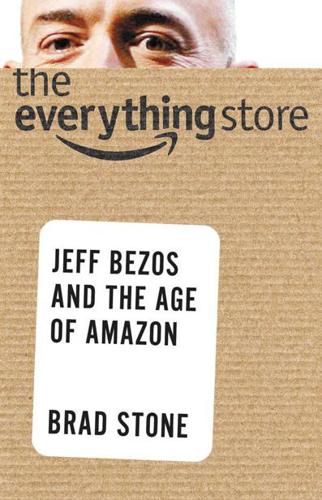
The Everything Store: Jeff Bezos and the Age of Amazon
by
Brad Stone
Published 14 Oct 2013
At the time, Amazon was making a little extra money by inserting paper advertisements into its delivery boxes, and Bezos himself received a package that contained a flyer for the DVD-rental firm. He brought the flyer into a meeting and said irritably of the managers running the advertising program, “Is it easy for them to ruin the company or do they have to work at it?” Bezos was clearly nervous about Netflix’s gathering momentum. With its recognizable red envelopes and late-fee-slaying DVD-by-mail program, it was forging a bond with customers and a strong brand in movies, a key media category. Bezos’s lieutenants met with CEO Reed Hastings several times during Netflix’s formative years but they always reported back that Hastings was “painfully uninterested” in selling, according to one Amazon business-development exec.

The Future Is Faster Than You Think: How Converging Technologies Are Transforming Business, Industries, and Our Lives
by
Peter H. Diamandis
and
Steven Kotler
Published 28 Jan 2020
He’d already taken his first software company public, then taken a hefty buy-out, leaving him a sizable nest egg to plunge into his next company. Hastings lit upon an interesting idea: Rent DVDs over the Internet and use the postal service to deliver them. He decided to give it a try—which was the decision that birthed Netflix. The second decision came a few months later, when Hastings had a bigger idea: Never charge late fees. The third decision was Netflix’s real breakthrough, the killer app, the “queue.” Subscribers could create a list of movies they wanted to watch and as soon as the company received word that a prior DVD had been mailed back, Netflix would send out another. Because their DVD rental policy allowed three movies to be checked out at once, users were never without something to watch, and the convenience turned the company into everyone’s default movie rental house.
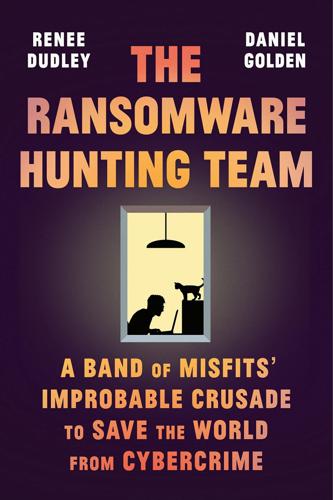
The Ransomware Hunting Team: A Band of Misfits' Improbable Crusade to Save the World From Cybercrime
by
Renee Dudley
and
Daniel Golden
Published 24 Oct 2022
The ransomware disabled the new system, and the officers went back to writing paper tickets—more than fifty thousand in May, June, and July. But the city lacked the staff to enter all of them manually into a database so that people could pay them. The city halted its scofflaw program, which booted cars with multiple unpaid citations, and made sure that people who had been unable to pay their tickets didn’t face late fees or have their licenses suspended. Water billing had also gone digital. In 2016, the city installed smart meters in homes to record water consumption. Now more than a hundred servers with water billing records were useless, and DPW couldn’t process the data or generate monthly bills. All it could do was urge residents to put money aside or come to the office and pay as much money as they wanted credited to their accounts.
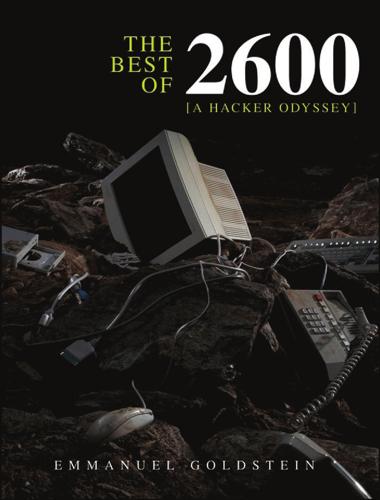
The Best of 2600: A Hacker Odyssey
by
Emmanuel Goldstein
Published 28 Jul 2008
Whether it’s a department store, a grocery store, a video store, or a hotel, you can rest assured that whoever is in charge knows less about how their systems work than a typical 2600 reader who walks in off the street. We always tread a fine line on this kind of subject matter. It’s one thing to understand how to exploit a late-fee system that allows you to never return videos, or how to find an easy way into a major retailer that stores its customers’ credit card info online, or how to use a store terminal to access secret stuff behind the corporate firewall. But it’s another thing entirely to use this knowledge for personal gain or to screw anyone over.
…
Shouts: Stankdawg, for getting me going on this whole project, dual for his constant support, the crews of DDP, Hackermind, and Radio Freek America, and most importantly, Sarah and Ashley. Outsmarting Blockbuster (Autumn, 2002) By Maniac_Dan I used to work at Blockbuster, so I am very familiar with their policies and practices involving late fees. I’m not going to discuss how stupid the policies are, and I’m sure that there are people who would argue with me no matter what I say, but if there comes a time when your car breaks down and the guy behind the counter just won’t believe you and you get charged $25 for 15 minutes, then you can use this method to have your fee removed.
…
The outstanding fees can be paid at any Blockbuster though (for your convenience in giving Viacom more money) but herein lies the weakness in the system: If your account is disabled due to a fee at another store, then the store you are trying to rent at has to call the store where you have a fee. The store with the fee on record must delete the fee and verify that a fee has been added to the account at the store you are trying to rent at. All customer accounts are stored locally, and the only information that is passed between stores is outstanding late fees. You have fees at one store (store #1 from now on) and you need to call that store and pretend to be from another store (store #2) and make the employees at store #1 remove the fees from your account, thinking you’re paying at store #2. Now to do this you need a store number from store #2 and your own account number, which can be found on your receipts or membership card.
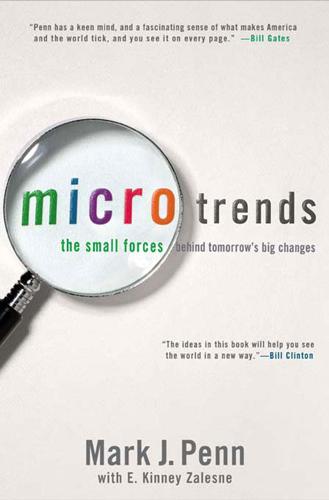
Microtrends: The Small Forces Behind Tomorrow's Big Changes
by
Mark Penn
and
E. Kinney Zalesne
Published 5 Sep 2007
In 1970, only 51 percent of families had ever used credit cards; now, over 80 percent have. And you don’t even have to have good credit to get one—in the 1990s, the rate of subprime lending (to people with troubled credit) grew even faster than the credit industry overall. Lenders complain about deadbeats, but the truth is they make more off interest and late fees from struggling customers than they lose from the complete defaulters. And with easier credit comes easier overextension. Another commonly cited reason is America’s abysmal savings rate. In 2005, we saved at a negative rate—for the first time since the Great Depression. ’Nuf said. Finally, many experts say bankruptcy is up because its stigma is down.
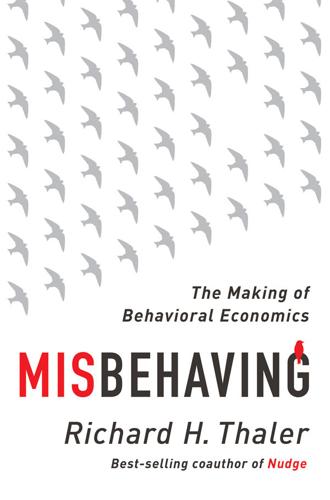
Misbehaving: The Making of Behavioral Economics
by
Richard H. Thaler
Published 10 May 2015
(Lamont and Thaler), 250 capital asset pricing model (CAPM), 226–29, 348 “CAPM is Wanted, Dead or Alive, The” (Fama and French), 228 Car Talk, 32 Case, Chip, 235 Case-Shiller Home Price Index, 235 cashews, 21, 24, 42, 85–86, 92, 100, 102–3, 107n casinos, 49n cautious paternalism, 323 Census Bureau, 47 Center for Research in Security Prices (CRSP), 208, 221 charity, 66, 129 cheap stocks, 219–21 Checklist Manifesto, The (Gawande), 356 Chen, Nai-fu, 243 Chetty, Raj, 320, 357–58 Chicago, University of, 255–56 behavioral economics conference at, 159–64, 167–68, 169, 170, 205 conference on 1987 crash at, 237 debate on behavioral economics at, 159–63, 167–68, 169, 170, 205 finance studied at, 208 offices at, 270–76, 278 Chicago Bulls, 19 Chicago police department, 260 chicken (game of), 183 choice: number of, 21, 85, 99–103 preferences revealed by, 86 choice architecture, 276, 326–27, 357 Choices, Values, and Frames, xiv Chrysler, 121, 123, 363 Cialdini, Robert, 180, 335, 336 Clegg, Nick, 333 Clinton, Hillary, 22 closed-end funds, 238–39, 239, 240 puzzles of, 240–43, 244, 250 coaches, 292–93 Coase, Ronald, 261 Coase theorem, 261–62, 264–65, 264, 267–68 Cobb, David, 115 Cobb, Michael, 115, 116, 117, 118n, 119, 120, 123 Coca-Cola, 134–35 cognitive dissonance, 178 commitment strategies, 100, 102–3, 106–7 compliance (medical), 189–90 COMPUSTAT, 221 computing power, 208 concert tickets, 18–19, 66 conditional cooperators, 146, 182, 335n “Conference Handbook, The” (Stigler), 162–63 confirmation bias, 171–72 Conservative Party, U.K., 330–33 constrained optimization, 5–6, 8, 27, 43, 161, 207, 365 “Consumer Choice: A Theory of Economists’ Behavior” (Thaler), 35 consumers, optimization problem faced by, 5–6, 8, 27, 43, 161, 207, 365 consumer sovereignty, 268–69 consumer surplus, 59 consumption function, 94–98, 106, 309 “Contrarian Investment, Extrapolation, and Risk” (Lakonishok, Shleifer and Vishny), 228 cooperation, 143–47 conditional, 146, 182, 335n Prisoner’s Dilemma and, 143–44, 145, 301–5, 302 Copernican revolution, 169 Cornell University, 42, 43, 115, 140–43, 153–55, 157 Costco, 63, 71–72 Council of Economic Advisors, 352 coupons, 62, 63, 67–68, 120 credit cards, 18, 74, 76–77 late fees for, 360 crime, 265 Daily Mail, 135 Daily Show, The, 352 Dallas Cowboys, 281 data: financial, 208 collection and recording of, 355–56 Dawes, Robyn, 146 Deal or No Deal, 296–301, 297, 303 path dependence on, 298–300 deals, 61–62 De Bondt, Werner, 216–18, 221, 222–24, 226n, 233, 278 debt, 78 default investment portfolio, 316 default option, 313–16, 327 default saving rate, 312, 316, 319, 357 delayed gratification, 100–102 De Long, Brad, 240 Demos, 330 Denmark, 320, 357–58 descriptive, 25, 30, 45, 89 Design of Everyday Things, The (Norman), 326 Diamond, Doug, 273, 276 Diamond, Peter, 323 Dictator Game, 140–41, 142, 160, 182, 301 diets, 342 diminishing marginal utility, 106 of wealth, 28, 30 diminishing sensitivity, 30–34 discount, surcharge vs., 18 discounts, returns and, 242–43 discounted utility model, 89–94, 99, 110, 362 discretion, 106 Ditka, Mike, 279, 280 dividends, 164–67, 365 present value of, 231–33, 231, 237 Dodd, David, 219 doers, planners vs., 104–9 Donoghue, John, 265n “Do Stock Prices Move Too Much to be Justified by Subsequent Changes in Dividends?”

Actionable Gamification: Beyond Points, Badges and Leaderboards
by
Yu-Kai Chou
Published 13 Apr 2015
Remember I discussed about how when you use Loss & Avoidance, the loss needs to be threatening? If the daycare center charged a lot more than $3, the Loss & Avoidance motivation would become more threatening and more parents would likely comply (begrudgingly of course, which would lead to switching day-care centers soon). Currently, there are some daycare centers that charge a $1 late fee for every minute the parent is late. This design actively gets parents to be on time more often. This is not only because the loss is more threatening, but also due to the parents feeling a combination of Core Drive 6: Scarcity & Impatience, as well as a bit of Core Drive 3: Empowerment of Creativity & Feedback since they feel a stronger sense of agency over end results.

People, Power, and Profits: Progressive Capitalism for an Age of Discontent
by
Joseph E. Stiglitz
Published 22 Apr 2019
As banking has evolved, increasingly, intermediation has shifted away from a relationship between savers and firms wanting to expand and create new jobs. Rather, banks intermediated between savers and households that wanted to spend more than they made, for example, through credit card lending. Credit card lending was so profitable because it was so easy to take advantage of consumers, charging them usurious interest rates, late fees (even when they weren’t late), overdraft fees, and a host of other charges. This was especially true as deregulation proceeded, eliminating constraints on banks’ predatory behavior. Banks could rake it in from all sides, using their market power to impose high fees on both consumers and merchants simultaneously.
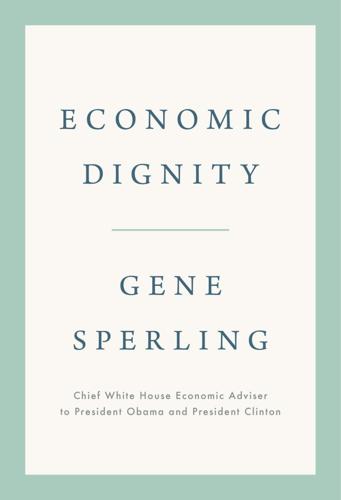
Economic Dignity
by
Gene Sperling
Published 14 Sep 2020
In 2014, forty-four states used the practice of charging released individuals for their own court-imposed probation and parole,69 in some cases in connection with for-profit probation service providers. There are also fees that are tacked on essentially if you’re poor: interest rates as high as 12 percent,70 late fees, fees for setting up a payment plan, even paying for collection.71 Ten million people collectively owe over $50 billion as a result of their engagement with the criminal justice system.72 These fines and fees operate as modern-day debt prisons. They force untold numbers of Americans to go to prison for nothing more than being too poor to pay debts to the criminal justice system—a criminalization of poverty.
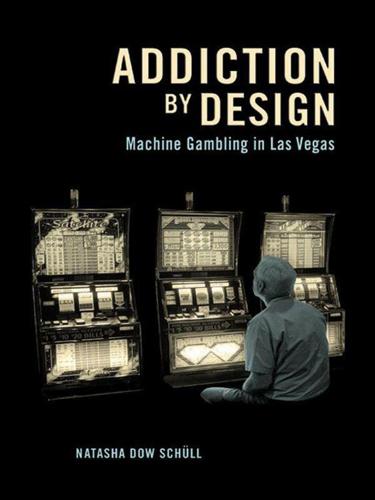
Addiction by Design: Machine Gambling in Las Vegas
by
Natasha Dow Schüll
Published 15 Jan 2012
The waitress spent whole paychecks at a time, worrying afterward that her children would not have money for school lunches. The businessman maxed out credit cards and depleted family savings, worrying that he might not manage to shuffle his money among bank accounts in time to cover his expenditures and avoid late fees, or to intercept the mail and conceal his losses from his wife. Despite radical differences in their life circumstances, the coin denomination of their game play, and the financial consequences of their gambling, the waitress and the businessman described their interactions with machines in uncannily similar language; reading over their transcripts, I found the two narratives nearly interchangeable in this regard.
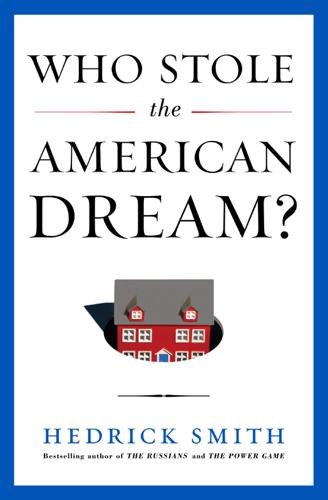
Who Stole the American Dream?
by
Hedrick Smith
Published 10 Sep 2012
“In a strange way, the banks were charging [these] borrowers higher interest rates in order to give the wealthy people a break … because the people who have money were paying in full, and they were getting the break at the expense of the people who couldn’t pay in full.” “More than 75 percent of credit card profits come from people who make those low, minimum monthly payments,” Elizabeth Warren and Amelia Warren Tyagi reported in The Two-Income Trap, “and who makes minimum monthly payments at 26 percent interest? Who pays late fees, overbalance charges, and cash advance premiums? Families that can barely make ends meet, households precariously balanced between financial survival and complete collapse. These are the families that are singled out by the lending industry, barraged with special offers, personalized advertisements, and home phone calls, all with one objective in mind: get them to borrow more money.”
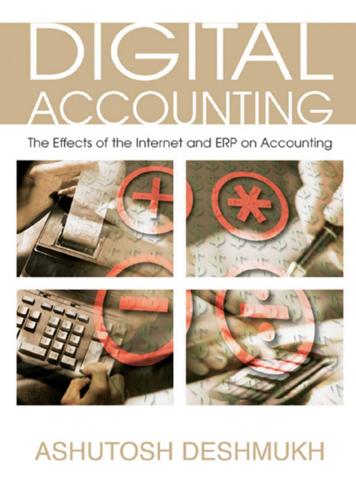
Digital Accounting: The Effects of the Internet and Erp on Accounting
by
Ashutosh Deshmukh
Published 13 Dec 2005
The estimates of total number of bills in the U.S. economy vary between 27 and 30 billion (approximately 12-15 billion B2B bills and 15-18 billion B2C bills). Businesses and consumers annually write approximately 68-70 billion checks, which is the highest check usage among industrialized nations. In B2C billing, consumers spend an average of 2 hours per month writing checks and spend $100 per year in associated costs, such as postage, late fees and returned checks. Bill presentment and payment costs businesses and consumers $80 billion per year; and internal processing costs for businesses are around $45 billion per year. Can these costs be reduced by using the Internet? Gartner Group estimates that using Web-based billing and payments, B2B companies can save $7.25 and B2C companies $0.55 per bill.
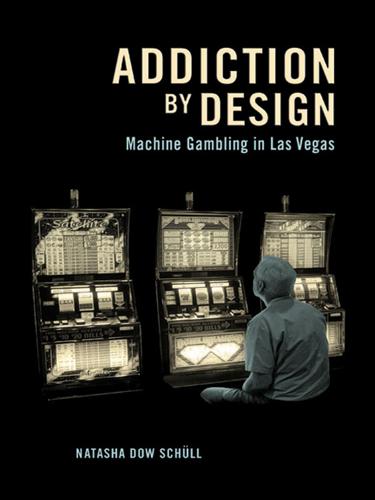
Addiction by Design: Machine Gambling in Las Vegas
by
Natasha Dow Schüll
Published 19 Aug 2012
The waitress spent whole paychecks at a time, worrying afterward that her children would not have money for school lunches. The businessman maxed out credit cards and depleted family savings, worrying that he might not manage to shuffle his money among bank accounts in time to cover his expenditures and avoid late fees, or to intercept the mail and conceal his losses from his wife. Despite radical differences in their life circumstances, the coin denomination of their game play, and the financial consequences of their gambling, the waitress and the businessman described their interactions with machines in uncannily similar language; reading over their transcripts, I found the two narratives nearly interchangeable in this regard.
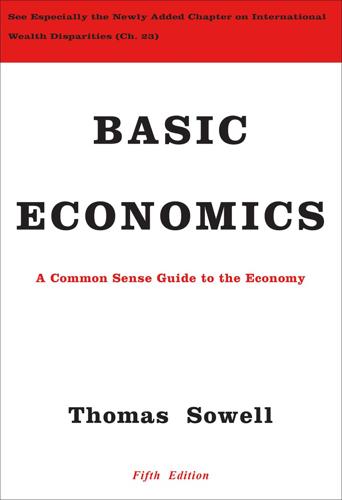
Basic Economics
by
Thomas Sowell
Published 1 Jan 2000
When Oregon passed a law capping the annual interest rate at 36 percent, three-quarters of the hundreds of payday lenders in the state closed down.{444} Similar laws in other states have also shut down many payday lenders.{445} So-called “consumer advocates” may celebrate such laws but the low-income borrower who cannot get the $100 urgently needed may have to pay more than $15 in late fees on a credit card bill or pay in other consequences—such as having a car repossessed or having the electricity cut off—that the borrower obviously considered more detrimental than paying $15, or the transaction would not have been made in the first place. The lower the interest rate ceiling, the more reliable the borrowers would have to be, in order to make it pay to lend to them.
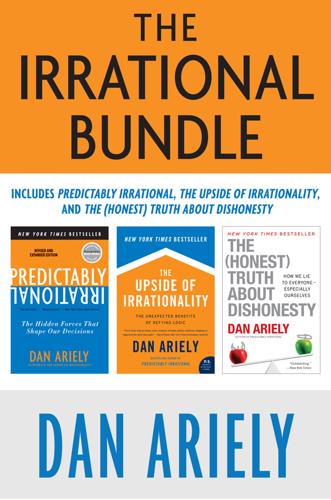
The Irrational Bundle
by
Dan Ariely
Published 3 Apr 2013
But here’s what I find strange: although companies have poured billions of dollars into marketing and advertising to create social relationships—or at least an impression of social relationships—they don’t seem to understand the nature of a social relationship, and in particular its risks. For example, what happens when a customer’s check bounces? If the relationship is based on market norms, the bank charges a fee, and the customer shakes it off. Business is business. While the fee is annoying, it’s nonetheless acceptable. In a social relationship, however, a hefty late fee—rather than a friendly call from the manager or an automatic fee waiver—is not only a relationship-killer; it’s a stab in the back. Consumers will take personal offense. They’ll leave the bank angry and spend hours complaining to their friends about this awful bank. After all, this was a relationship framed as a social exchange.

Egypt Travel Guide
by
Lonely Planet
Travel in Sinai between Sharm el-Sheikh and Taba, including St Katherine’s Monastery but not Ras Mohammed National Park, requires no visa, only a free entry stamp, good for a 15-day stay. Visa extensions used to be routine, but are now subject to scrutiny, especially after repeat extensions. Be polite and say you need more time to appreciate the wonders of Egypt. 14-day grace period for extension application, with E£100 late fee. If you leave during this time, you must pay E£135 fine at the airport. Visa Extensions: Where to Go Wherever you apply, you’ll need one photo and two copies each of your passport’s data page and the visa page. The fee depends on where you apply, but it’s no more than E£15. Alexandria ( 03-482 7873; 2nd fl, 25 Sharia Talaat Harb; 8.30am-2pm Mon-Thu, 10am-2pm Fri, 9-11am Sat & Sun) Aswan ( 097-231 2238; Corniche an-Nil; 8.30am-1pm Sat-Thu) Cairo (Agouza) ( 02-3338 4226; El Shorta Tower, Sharia Nawal; 8am-1.30pm Sat-Wed) For Giza addresses only: enter at side entrance of police station, go to window 4, 2nd floor.

Egypt Travel Guide
by
Lonely Planet
Travel in Sinai between Sharm el-Sheikh and Taba, including St Katherine’s Monastery but not Ras Mohammed National Park, requires no visa, only a free entry stamp, good for a 15-day stay. Visa extensions used to be routine, but are now subject to scrutiny, especially after repeat extensions. Be polite and say you need more time to appreciate the wonders of Egypt. 14-day grace period for extension application, with E£100 late fee. If you leave during this time, you must pay E£135 fine at the airport. VISA EXTENSIONS: WHERE TO GO Wherever you apply, you’ll need one photo and two copies each of your passport’s data page and the visa page. The fee depends on where you apply, but it’s no more than E£15. Alexandria ( MAP GOOGLE MAP ; %03-482 7873; 2nd fl, 25 Sharia Talaat Harb; h8.30am-2pm Mon-Thu, 10am-2pm Fri, 9am-11am Sat-Sun) Aswan ( GOOGLE MAP ; %097-231 2238; 1st fl, Police Bldg, Corniche an-Nil; h8.30am-1pm Sat-Thu) Cairo (Agouza) (%02-3338 4226; El Shorta Tower, Sharia Nawal; h8am-1.30pm Sat-Wed) Cairo (Downtown) (Mogamma Bldg, Midan Tahrir; h8am-1.30pm Sat-Wed) Hurghada (Sharia an-Nasr, Ad-Dahar; h8am-2pm Sat-Thu) Ismailia (%064-391 4559; Midan al-Gomhuriyya; h8am-2pm Sat-Thu) Luxor ( GOOGLE MAP ; %095-238 0885; Sharia Khalid ibn al-Walid; h8am-2pm Sat-Thu) Minya ( GOOGLE MAP ; %095-236 4193; 2nd fl, above main post office; h8.30am-2pm Sat-Thu) Port Said (Governorate Bldg, Sharia 23rd of July; h8am-2pm Sat-Thu) Suez (Sharia al-Horreyya; h8.30am-3pm) Women Travellers In public anyway, Egypt is a man’s world, and solo women will certainly receive comments in the street – some polite, others less so – and possible groping.
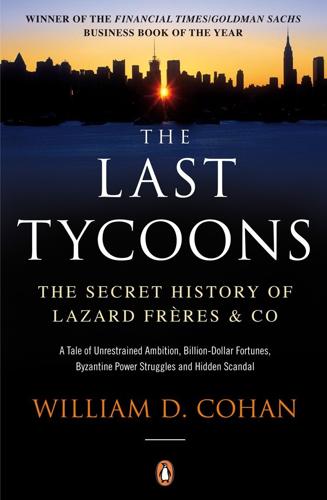
The Last Tycoons: The Secret History of Lazard Frères & Co.
by
William D. Cohan
Published 25 Dec 2015
A Lazard partner tells the story of how he was outside Michel's office one day--waiting to go in to see him--when he overheard Annik having to juggle phone calls from the two women simultaneously. On one phone line was Margo, for whom Annik was arranging a private jet to take her to Moscow, at a cost of $100,000. On the other line was Helene, reminding Annik to return rented videos to the video store in order not to be charged a two-dollar late fee. During one of our many interviews--this one at his magnificent Paris home--I asked Michel about his relationship with Margo. Moments before, he had introduced me to Helene, his thin and somewhat dour wife of fifty years, as she walked through the grand living room where we were meeting. Although New York disclosed the relationship in 1996, Michel seemed to shudder visibly at the question and asked me, for the only time in all of our many meetings, to turn off the tape recorder.